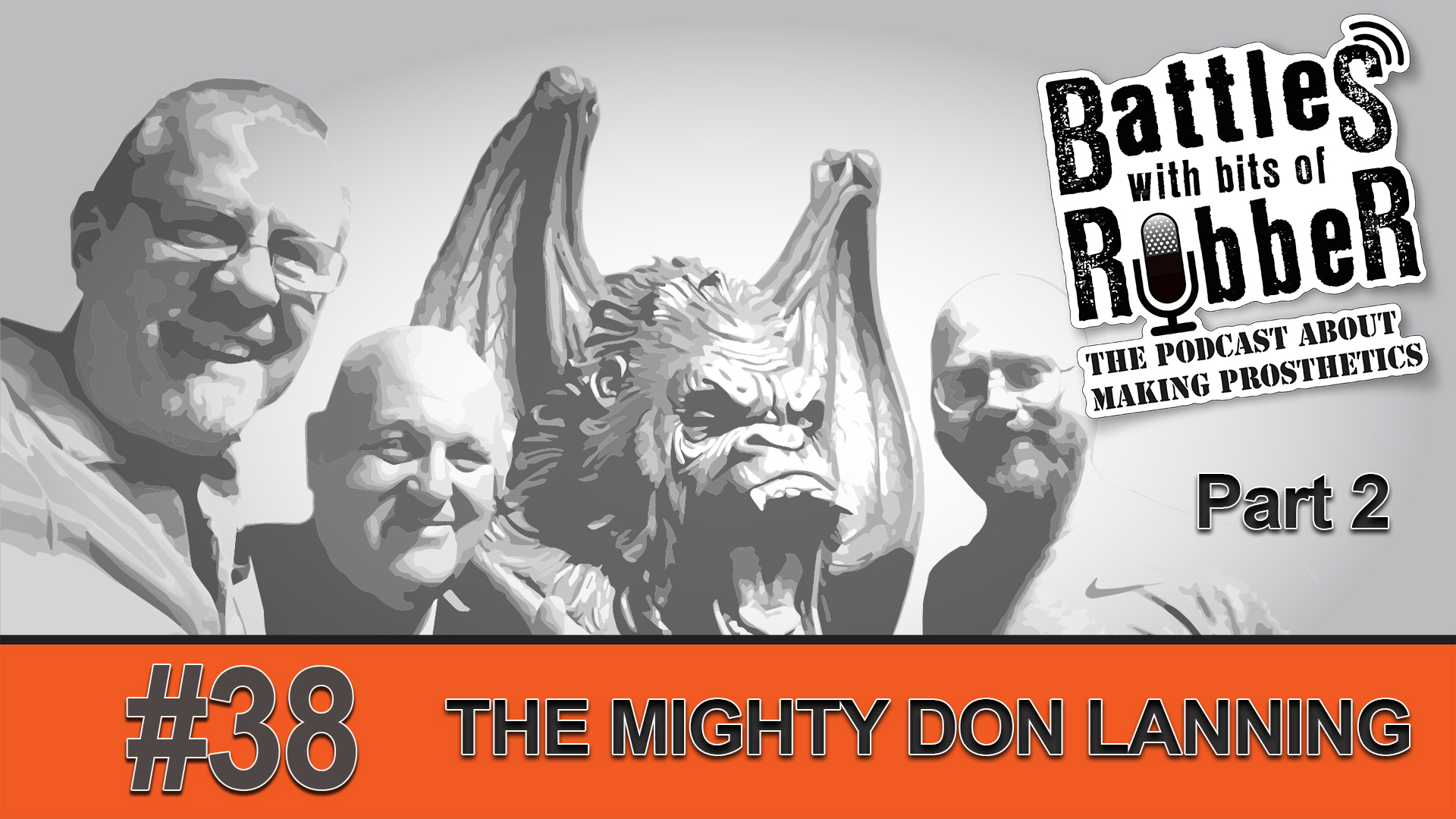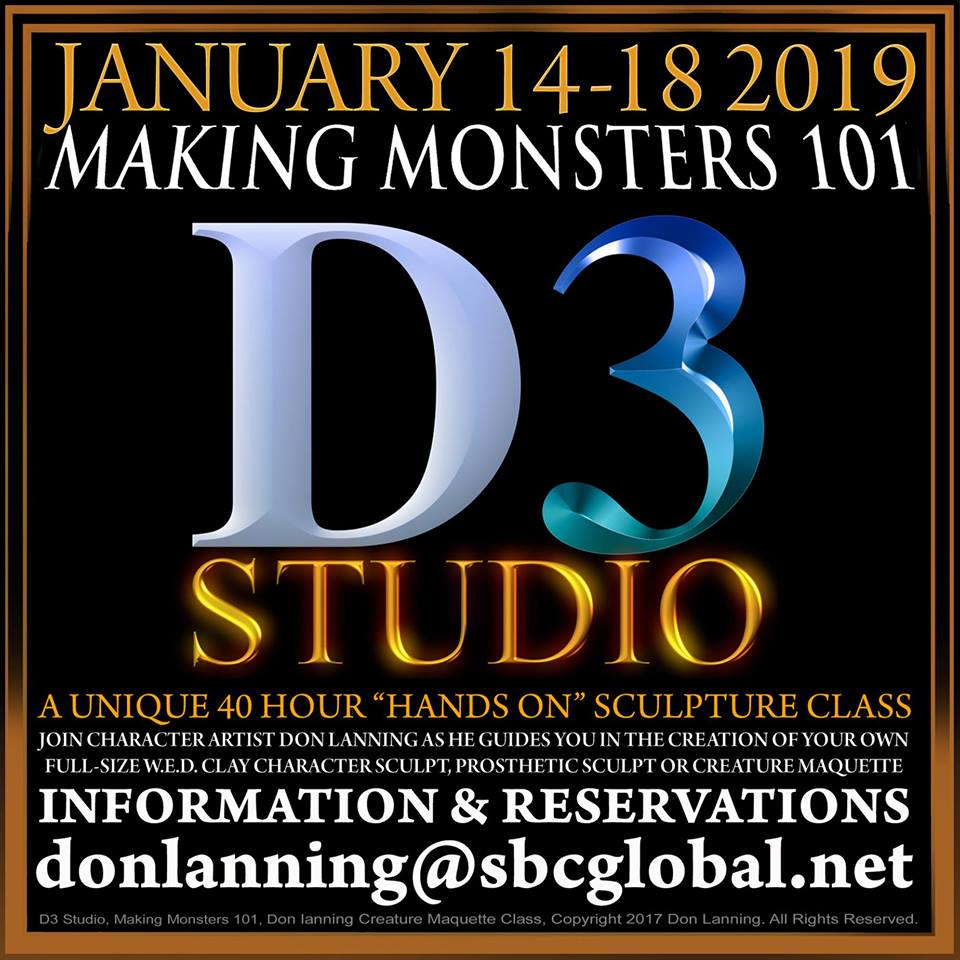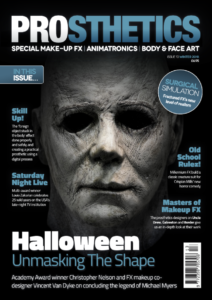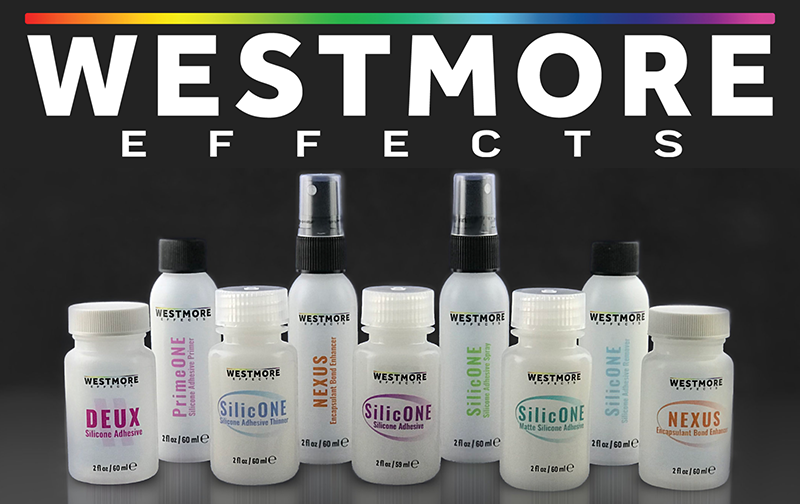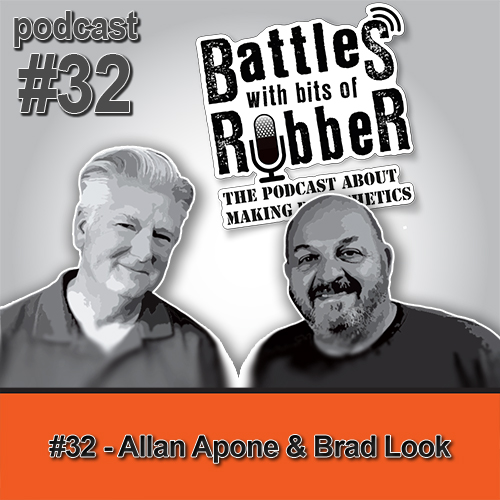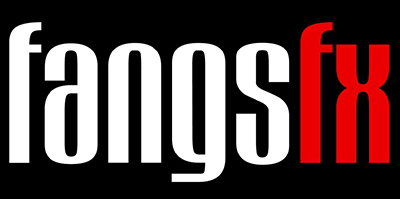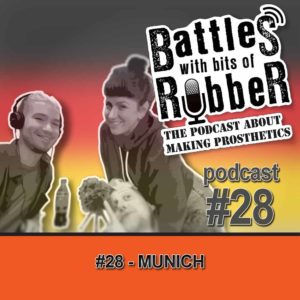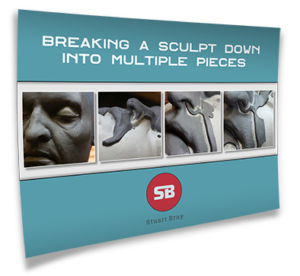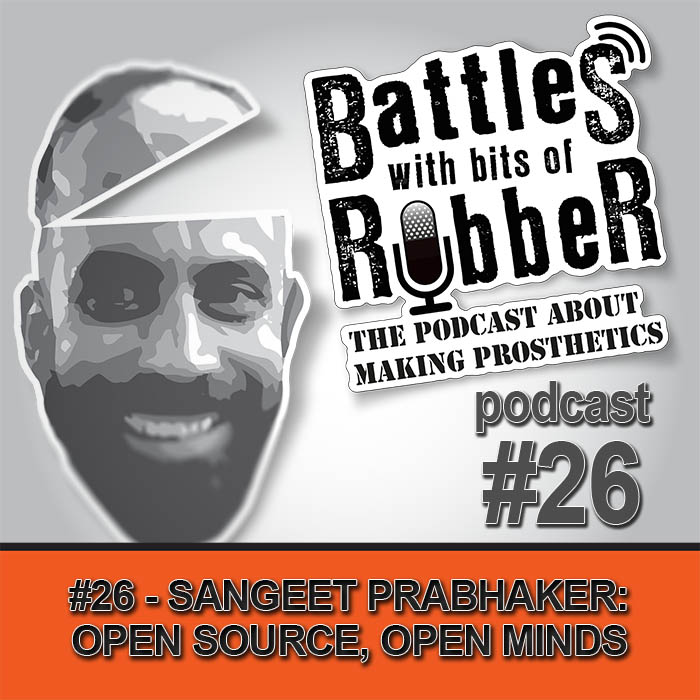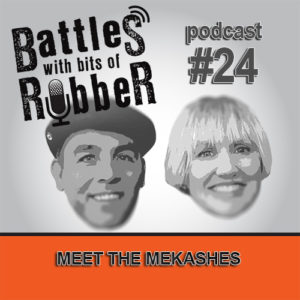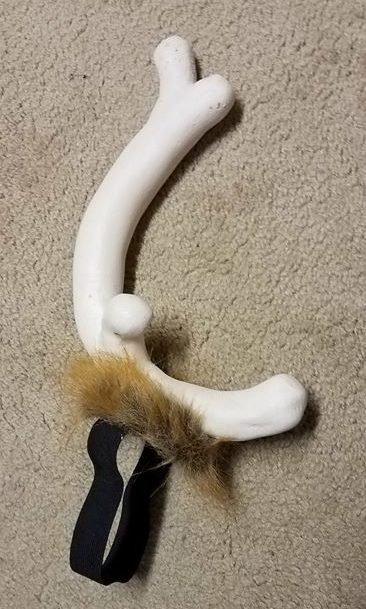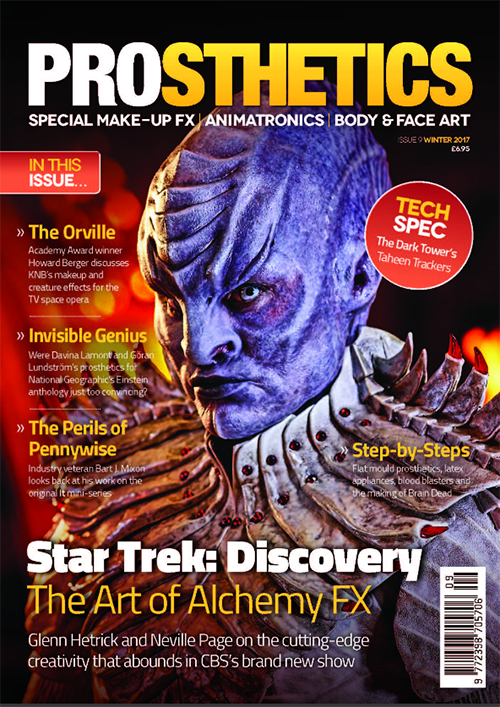"Paul walked into a Lifeboat station on his 17th birthday and never left, initially volunteering at Poole and now at Tower Lifeboat in London. So far he has been a Search and Rescue Volunteer with the RNLI (Royal National Lifeboat Institution) and HM Coastguard for 31 years."
So reads the write-up for the honours listing of Pauls OBE, a high honour of recognition for sterling work which he continues to do within maritime medicine and emergency response.
Training those who deal with emergency and pre-hospital medicine is no mean feat, and making sure casualty makeup used in training medical personnel is both accurate and hard wearing is a key part of that. It was because of this shared interest that Paul and Stuart crossed paths, and led to this episode of the podcast.
Casualty simulation is often an avenue makeup artists will get involved in as they can obviously add a great deal of realism to training scenarios with good makeup. Anyone who has done a first-aid at work course will no doubt be familiar with a biro mark or lip pencil line as a substitute wound.
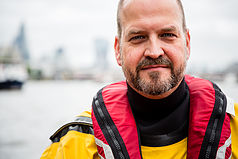
Pauls experience teaching casualty simulation revealed to him how a lack of correct reference, appropriate anatomical awareness and poor technique meant sometimes makeup being done was not helping the simulation!
This can be both from an aesthetic point of view (it doesn't actually look very good or realistic) and from a medical diagnostic point of view if a 'bruise' looks more like a burn and then is treated as such.
He set about to change that with the training he does with his company Saviour Medical.
We are used to seeing wounds portrayed on TV and they are often overdone for dramatic effect and not realistic, with big blood sprays etc. There is a difference between the drama of a compelling story requiring larger than life effects and correct representation of real trauma.
Realistic Medical Moulage for simulation purposes
This podcast episode hopes to deal directly with that, focussing on what is important with some real insight into how best to approach. Paul made a brief list of key elements which we cover in depth in the podcast, such as:
Correct Wound: - Looks accurate – often less is more - Bleeds the right amount - Skin tones accurate - Right location, need for some surface anatomy knowledge - Right materials used – must survive contact with the responder – no wax or tissue paper
Actor Compliance: - Pre brief the simulation – care of any sensitive issues - Pre brief wound location and ascertain actor is ok with that – we all have bits of us we don’t like! - Pre-brief if trauma 'cut downs' to nearly nude / underwear - Need to gain consent for the treatment interventions - Explain symptoms that should be displayed and progression of symptoms based upon correct or incorrect interventions - Supply safe word to actor and treatment team - Freshly shaved where appropriate - Bring old clothes and a spare set to go home!
Scene: - Supply appropriate props (inhalers etc) - Dress scene to make the mechanism of injury realistic - Ascertain real impact on actor (hot / cold / wet etc)
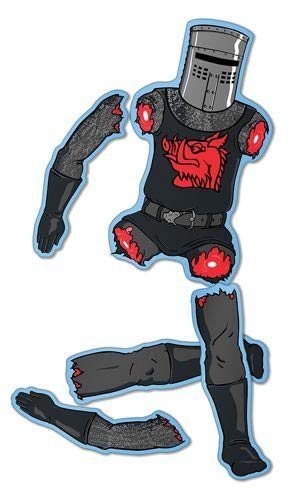 The Black Knight Always Triumphs. Even though his wounds may bleed a little too much.
The Black Knight Always Triumphs. Even though his wounds may bleed a little too much.
We mention a few books, and the ones I really like are The Sick Rose: Disease and the Art of Medical Illustration by Richard Barnnett and Special Effects Guide Of Real Human Wounds and Injuries by Benito Garcia.
We also mention a previous episode of our podcast where real carcasses of pigs (supplied by a butcher) were shot with different guns, allowing Todd to make casts of the resulting damage - many of which he then used to make appliances with accurate trauma effect!
Listen here to find out more on the episode 'Shooting Guns At Meat'.
As ever, we are so grateful to you for listening and giving us your time. If you enjoy this podcast then please mention and link it in your favourite social media platform.
It really helps us grow the podcast, secure guests and bring you bigger and better shows.
-------------------------------------------
IMATS LONDON 2019 PROMO CODE
Looks like there will be some podcast action at London IMATS 2019, so come and say hi! Maybe handing out some swag too!
I'll bring some audio gear and record some bits there, and those fine folks at Makeup Artist Magazine have given us a PROMO CODE to get a DISCOUNT on show tickets. When prompted at paytime, simply use the coupon code Bray to get £20 off a ticket!
Till next time!
-Stuart & Todd
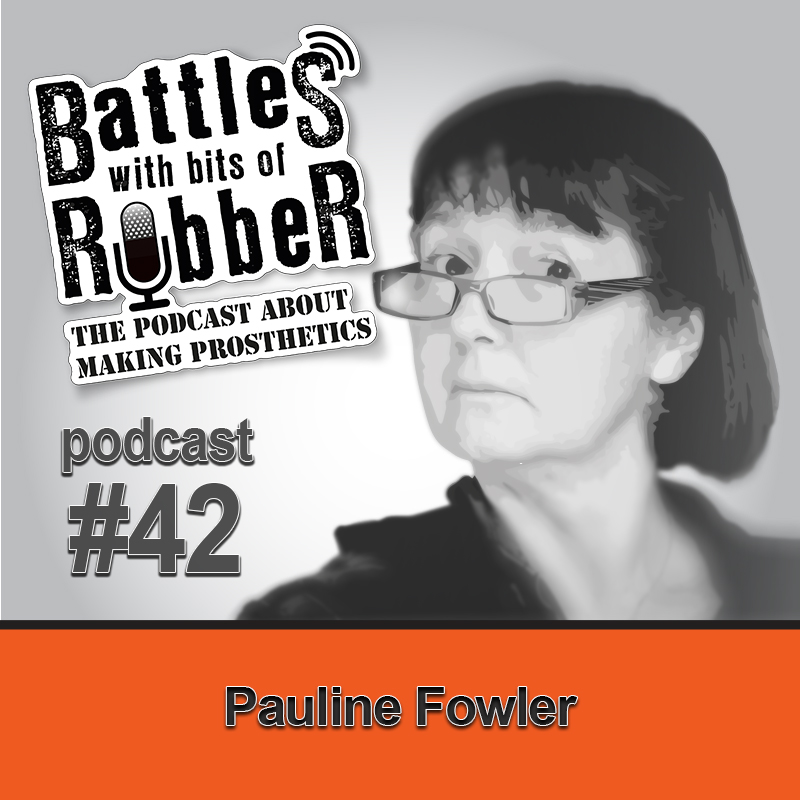
In this podcast we talk about art, what it means to be an artist, why we do it, and the challenges we face in trying to make a living doing this.
This was mostly brought about because of the fantastic conversation I had with my first ever boss when I started working in effects in 1994.
Pauline and business partner, Nik Williams run Animated Extras, an effects company specialising in prosthetics, animatronics, puppets, creature suits, fake bodies and many animals from elephants, bats, sharks...you name it. In their own words...
"From singing sloths to the putrefying corpses of Hollywood A-listers, Animated Extras have been creating all kinds of weird and wonderful things for the Film, TV, and advertising industry since 1986."
Pauline was the first person I ever saw take a lump of clay and make it look like a real person when she made a fake head of Michael Gambon for the film 'Mary Reilly'.
It was to me complete and total magic, and it was an absolute delight and honour to sit with her and talk frankly about the task of sculpting. We recorded this interview at Animated Extras workshop in Shepperton Studios.
Things we cover in the chat include:
- Finite existence
- Having a brief set by industry v personal jobs
- Working in bronze
- Scans v sculpt and the life looks fake but feels real etc.
- Types of sculpting and sculptors
- Get the feel early rather than struggle on with wrong and try and make it right.
- Watching different sculptors work when you run a company.
- Photography
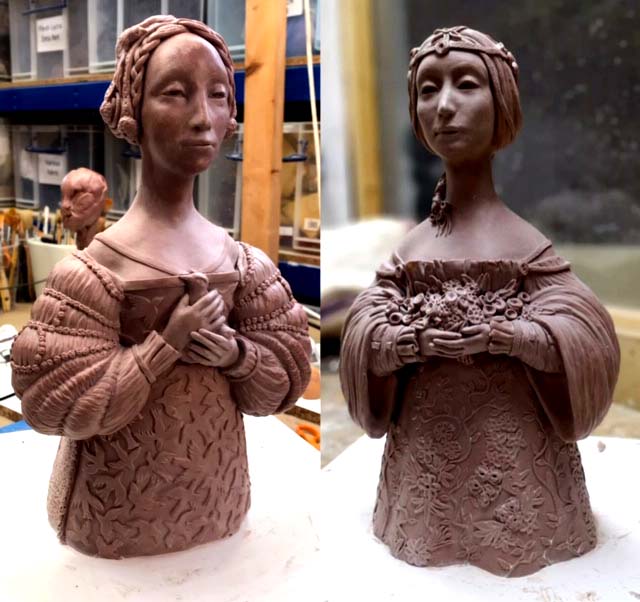
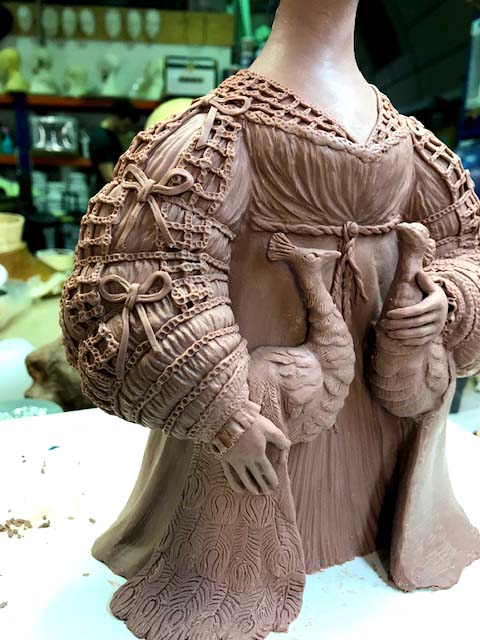
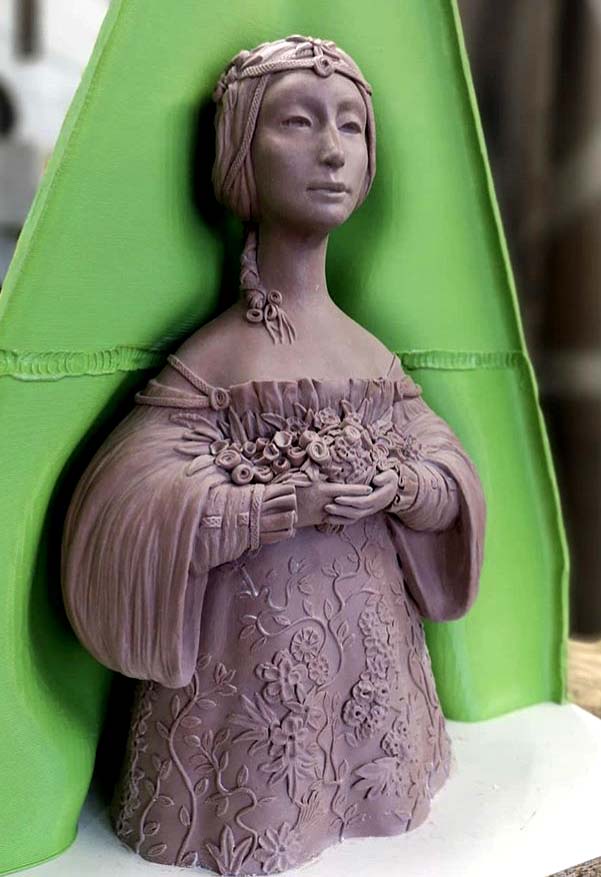
The Three Sisters Pauline sculpted in Monster Clay before being cast in bronze. (Pauline hated plastilines before, so this was a significant development)
Todd and I get stuck into some deep dives about art, and how it's a joy to have a craft but also a largely unappreciated career path. It doesn't save lives or risk that of the artist by putting them in harm's way.
It often serves the artist more than the community around it, and may be seen as a selfish, luxury position and an unnecessary way to spend a life.
See what you think and maybe drop us a line at stuartandtodd@gmail.com with your thoughts and experiences about that.
I mention a great podcast I listened to by Seth Godin, (the podcast is called 'Akimbo and this was from series 2, episode 9 called 'Distribution and cultural destiny') and in it he talks about how the distribution of media changed the media it distributed.
From cinemas, to TV, to Home Vidoe, DVD and now streaming, each new development has reduced costs and democratised the medium. Such access means more making and consumption, but often this can also mean a watering down of quality.
Is that a fair trade off or an inevitable side effect? See what you think, I'd reccommend it.
Seth is a very influential thinker and I listen to almost everything he puts out. Listen here
------------------------------------------
Lastly, here is the letter to Agnes De Mille Todd mentioned.
There is a vitality, a life force, a quickening that is translated through you into action, and because there is only one of you in all time, this expression is unique.
If you block it, it will never exist through any other medium and be lost. The world will not have it. It is not your business to determine how good it is, nor how valuable it is, nor how it compares with other expressions.
It is your business to keep it yours clearly and directly to keep the channel open. You do not even have to believe in yourself or your work. You have to keep open and aware directly to the urges that motivate you.
Keep the channel open. No artist is ever pleased. There is no satisfaction whatever at any time. There is only a queer, divine dissatisfaction, a blessed unrest that keeps us marching and makes us more alive than the others.
-Martha Graham
------------------------------------------
We'd appreciate it if you'd share this podcast with friends or colleagues who you think would get a kick out of it.
Thank you for sticking with us!
-Stuart & Todd
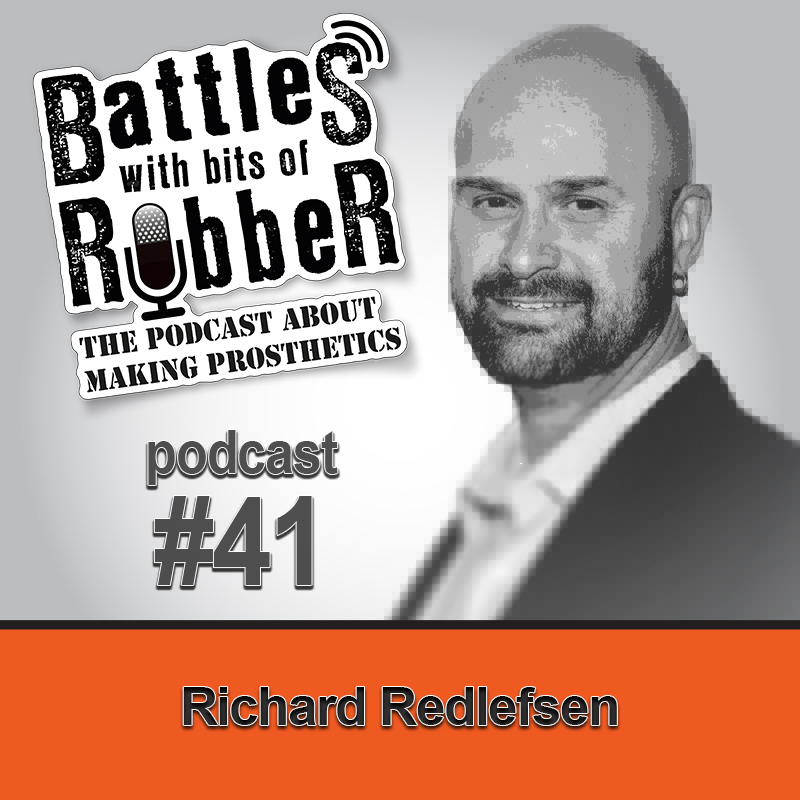
Richard Redlefsen is someone I saw for the first time a few years back at the UMAE where he was applying his demo makeup on the PPI stand.
What was of note for me was how particular and precise everything was. Care was taken at every turn, and it struck me that the amount of effort that takes must come from a deep well.
So it was a great pleasure to sit and chat with the man himself, and I could ask if he thought of this about himself and if we could pick apart where that comes from. As you'll hear, Richard had a career as a dancer before he embarked on makeup, and his training was thorough. I think that experience and also working for a makeup brand such as Lancôme meant his work doesn't start and stop with bits of rubber!
Follow Richard on his Instagram to see just how versatile this chap is.
Check out a brief selection of the range Richard covers.
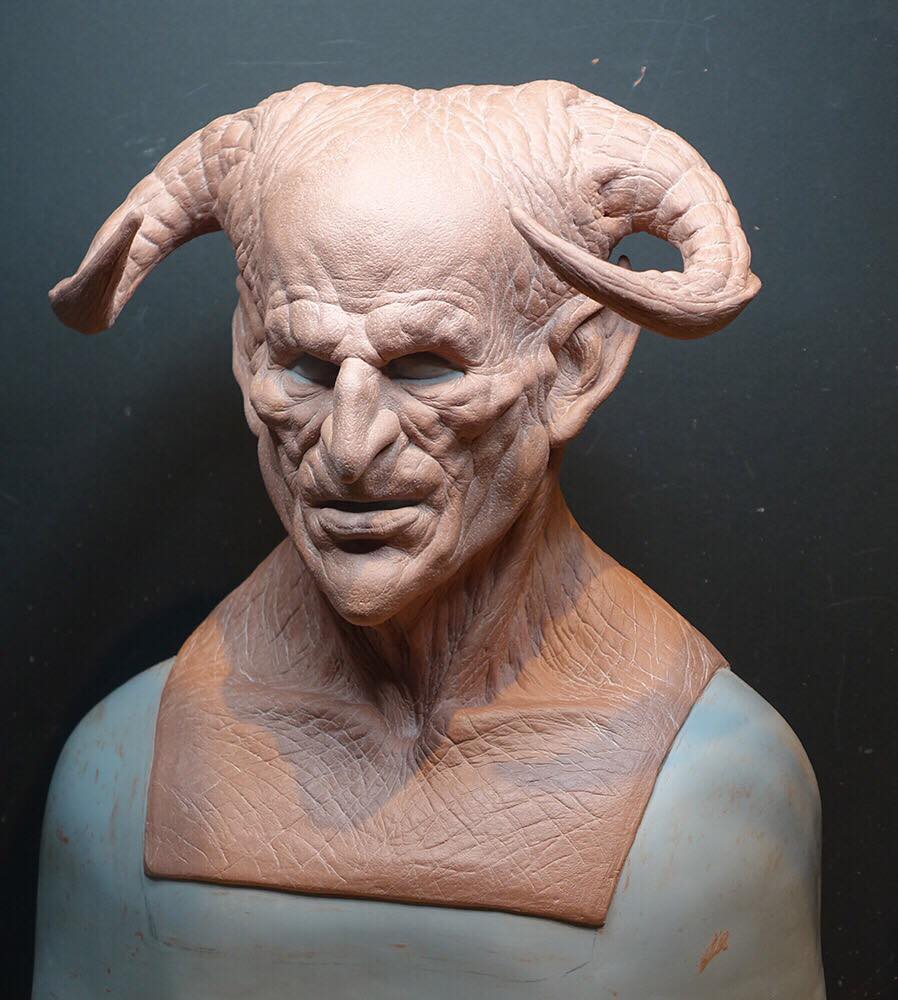 A Devil mask sculpt completed recently for Immortal Masks.
A Devil mask sculpt completed recently for Immortal Masks.
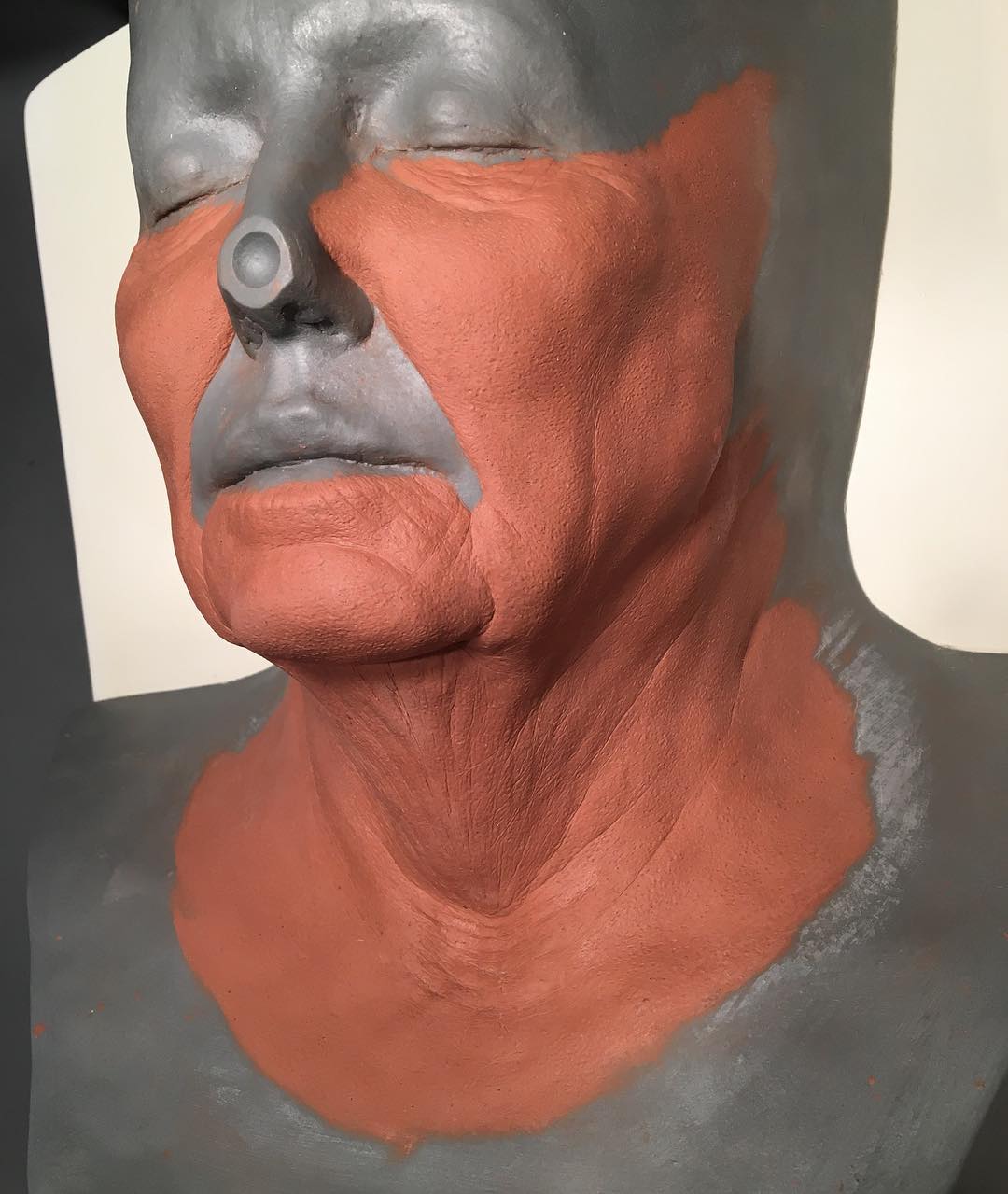 Claudia Alta (Lady 'Bird' Johnson) wrap-around prosthetic sculpt ready to mould.
Claudia Alta (Lady 'Bird' Johnson) wrap-around prosthetic sculpt ready to mould.
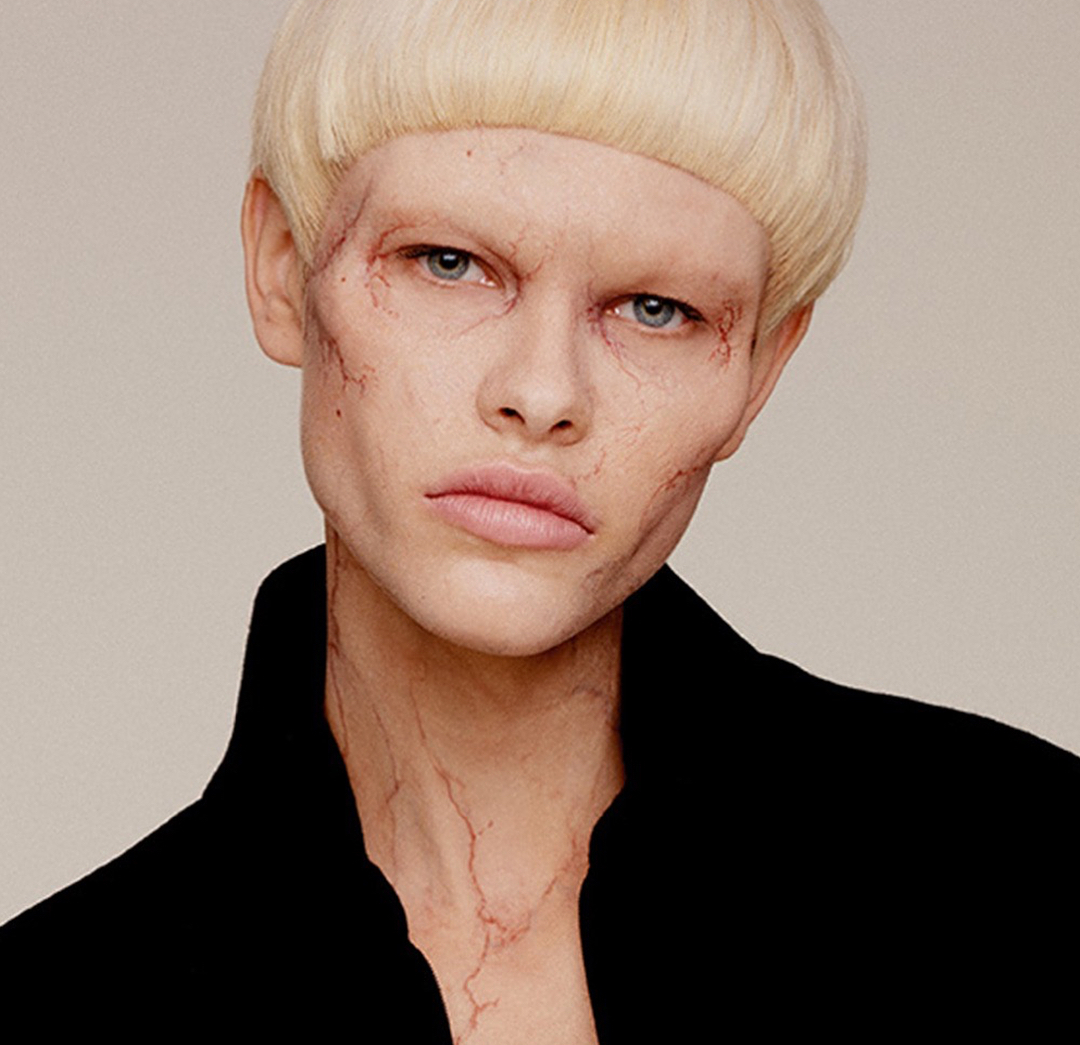 Zombie makeup on Eva Minaeva for TUSH magazine.
Zombie makeup on Eva Minaeva for TUSH magazine.
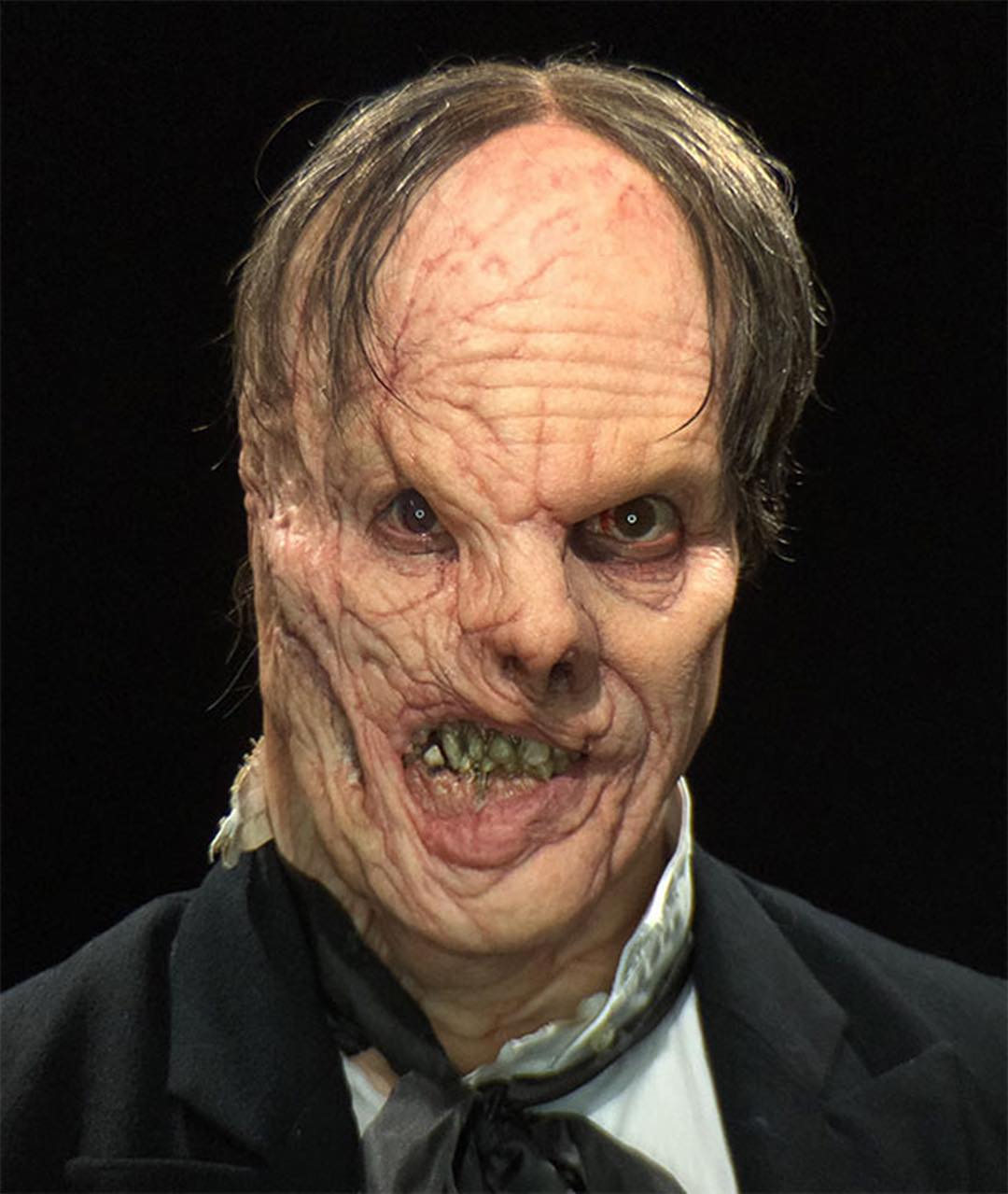 Phantom makeup from Monsterpalooza 2016.
Phantom makeup from Monsterpalooza 2016.
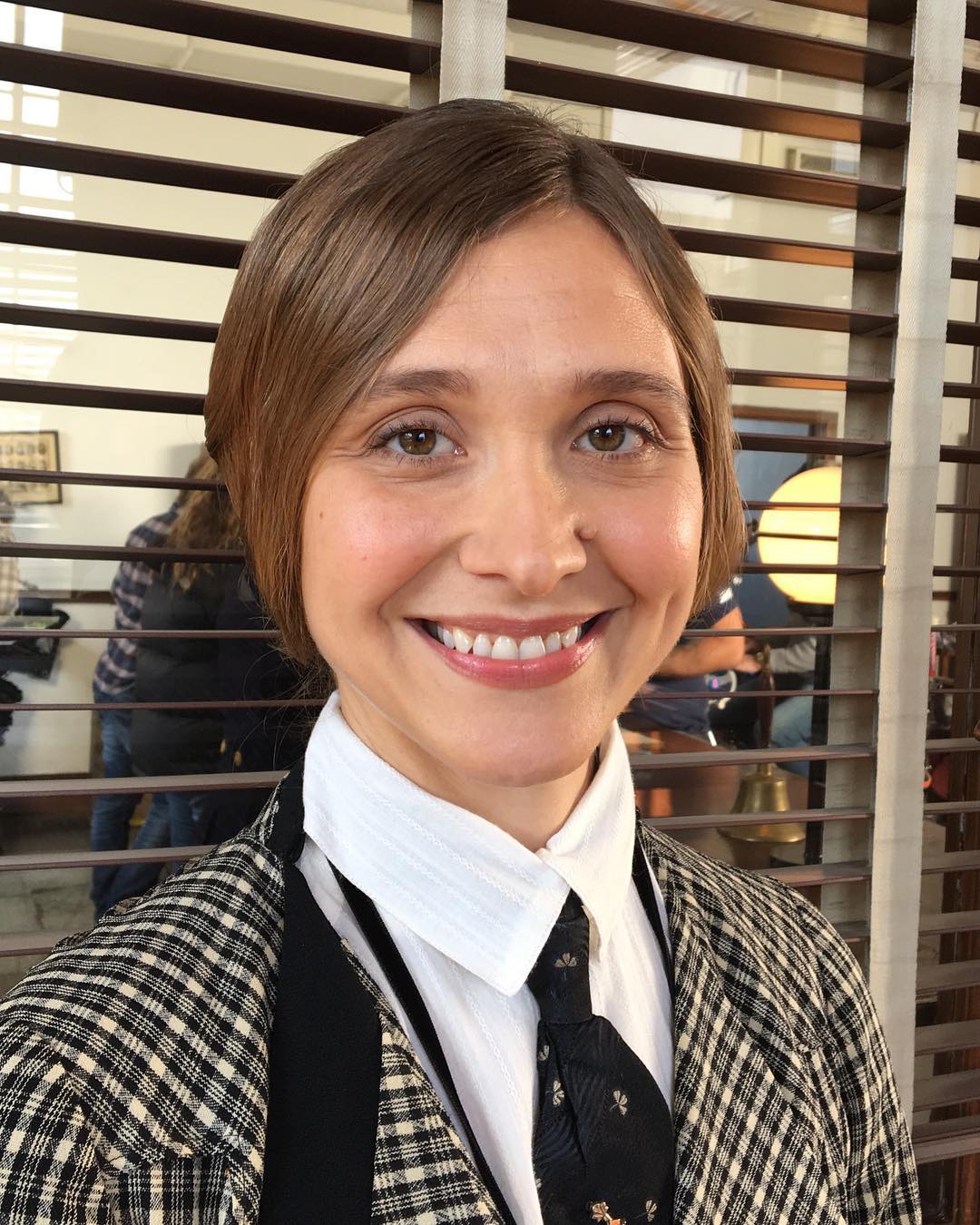 A 1920s beauty makeup on Sarah Sokolovic from the NBC show Timeless. Sarah plays Grace Humiston (the first female Special Assistant United States Attorney). Makeup was usually done by Peter DeOliveira, and Richard filled in on this day. It's quite a responsibility to fill in seamlessly on a show with established looks.
A 1920s beauty makeup on Sarah Sokolovic from the NBC show Timeless. Sarah plays Grace Humiston (the first female Special Assistant United States Attorney). Makeup was usually done by Peter DeOliveira, and Richard filled in on this day. It's quite a responsibility to fill in seamlessly on a show with established looks.
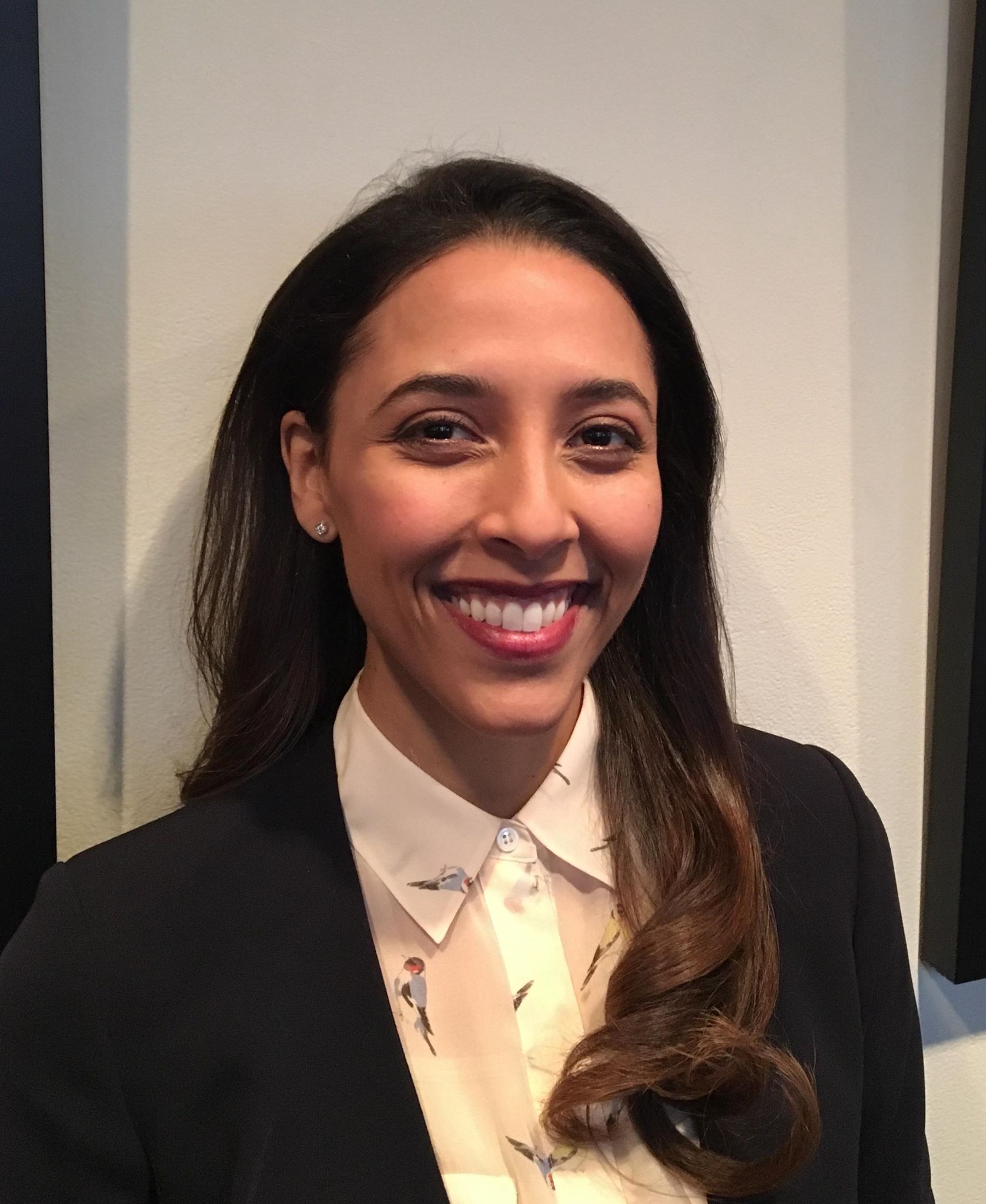
Another beauty makeup on Bianca Lopez from NBC show Timeless. Makeup by Richard Redlefsen. Debbie Zoller makeup dept head.
We are on the lookout for your stories of people wanted way too much of something for a whole lot of nothing.
We chat about a Facebook post which got a lot of people's back up, as a freelancer or anyone with a creative spark, you may have been approached to do something which gradually expands into a lot of somethings, and payment is strangely far from the table.
Email us with your stories, screenshots or anything regarding that. We'd love to do a post focussing on that and read some of the best ones out, and formulate an appropriate response to arm you if you find yourself in that position of feeling bad for wanting fair compensation.
Email us direct at stuartandtodd@gmail.com
Facebook page at Battles With Bits Of Rubber
If you enjoy this, PLEASE help us grow by telling someone about us and posting on social media!
We had a lovely message from Charlotte Annice Spruch who mentioned the formula for finding your worth from a few episodes back on a Facebook group. Cheers Charlotte!
That kind of sharing is what helps us grow, and we get heard by the people who would be glad to find us!
Till next time!
- Stuart & Todd
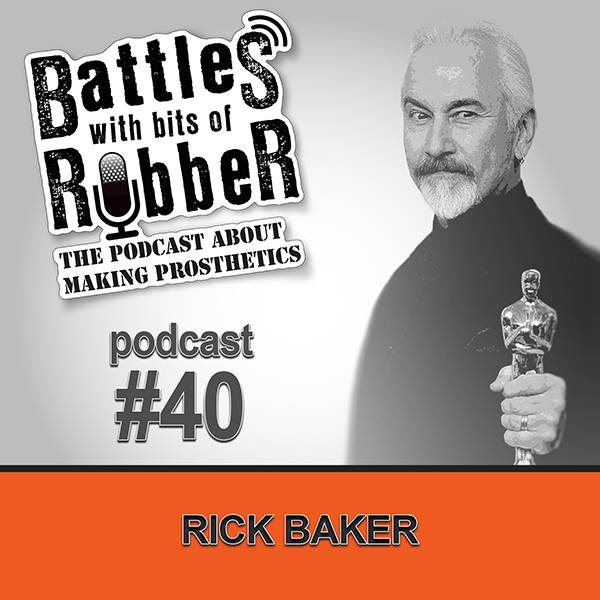
Rick Baker knows a thing or two about making stuff in rubber.
It's also fair to say he knows a thing or two about the digital world too, as he has been mixing the two for a while.
In 2015, when it was announced that Rick was to close his shop, the FX world was stunned and the bell tolled once again for the end of all practical effects as people speculated the end of live-action anything.
There was a Vice article at the time which claimed (again) the 'CGI was killing the industry' which, if you were knee deep in rubber and working crazy hours trying to get stuff done for a show like I and many others were was hard to take seriously.
Now the dust has settled, I was so stoked to get a chance to sit and talk to the man himself and see what he was doing with himself now he was out of the industry. He was after possibly the most well known and most respected inspirations working at the time, so what were we to do now he had hung up his makeup brushes?
The answer? Keep on making things.
Simply put, what has happened since Rick retired is that he is still working and still developing. He has worked on things he wanted to work on make them the way he wanted to make them. He has pushed into mixing up practical and digital techniques in both digital sculpting and 3D printing, post production elements as well as being able to indulge in some of the funnest Halloween makeups we have seen so far.
Following Rick on Instagram (therickbaker), you will see a man working harder than ever but this time, he only has to please himself rather than juggle a board of producers. No budget fights or sudden changes of direction to steal away the efforts so far. It is, frankly, amazing. If you have been inspired by the Rick Baker of Thriller, American Werewolf and Nutty Professor, then I am pleased to say your inspiration is still there better than ever.
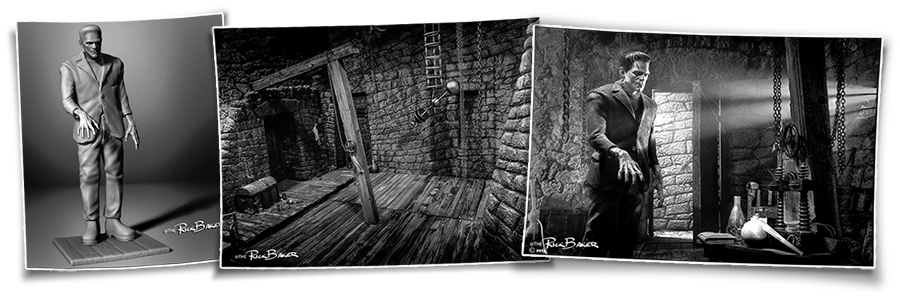
Rick has been working on a scale model scene from the 1932 Frankenstein movie.
It really is very cool.
I particularly wanted to talk to Rick about this move into the newer technologies. We all love to talk about American Werewolf of course, but that ground has been covered before, and I wanted to talk to him about what is going on now. As you'll hear, Rick was an early adopter so it really isn't that 'new' after all.
As therapy for me, it totally settled my own fears on digital work and I am happy to say I am flying along with ZBrush, CAD and 3D printing now myself. I finally lost the fear and found the love for it. Only took me ten years.
Thanks, Rick!
Thanks again for listening, and if you would like to support us, as ever there is one thing you can do that helps more than anything - tell someone else about the podcast! Share this on social media and tell us how we are doing!
You can email us here direct at stuartandtodd@gmail.com
We appreciate your attention!
- Stuart & Todd
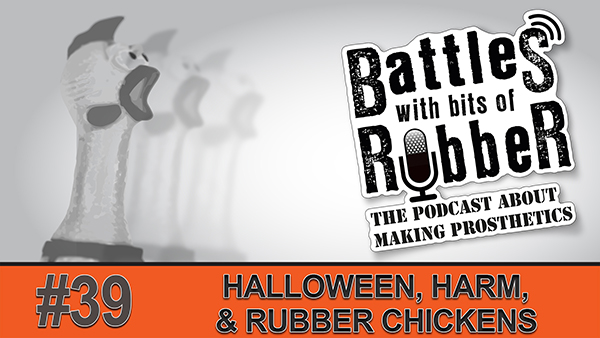
Something that Don talked about passionately in our interview was how (mostly) young, creative people can be in a position to get taken advantage of. When working starting out, you are not likely to be handed a position of massive responsibility with large sums of money and heavy hitting clients.
So it stands to reason when the phone first rings, it’s likely to be a smaller production with little or no budget looking for some help and played right it can be a wonderful place to start.
In this episode, we chat about this with a word of warning and a method of understanding your worth so that if you find yourself in this position, you can check yourself and your fluctuating emotions against the empirical gauge of common sense.
Halloween Horrors
We also wax lyrical about plain dangerous Halloween makeups which we have seen. Every year, a plethora of inappropriate objects are attached to eyes and noses in an attempt to get likes and attention.
There isn't anything wrong with that unless of course, actual harm can come about from doing so. Using sharp things on the skin is a no-no. In the latest Prosthetics Event and Prosthetics Magazine, Todd and I covered a safe way of doing one such gag.
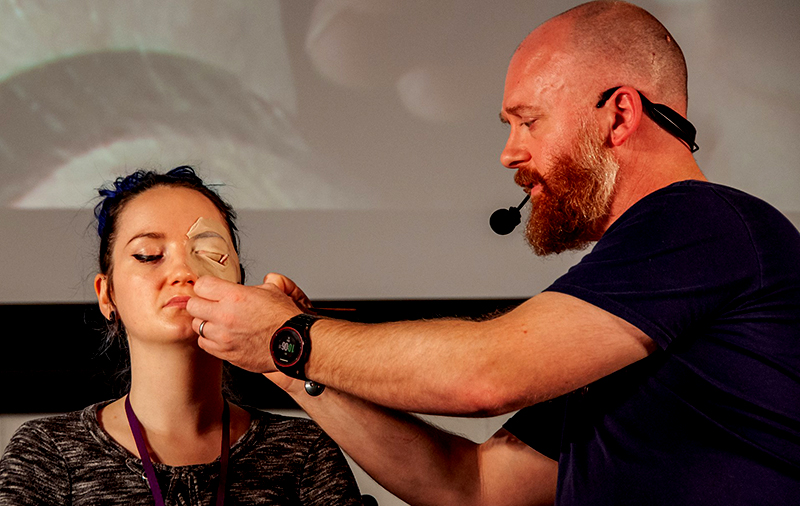 Claire Golby kindly lent me face so I could slam a screwdriver into her eye. Kind of. No Claires were harmed in the making of this demo.
Claire Golby kindly lent me face so I could slam a screwdriver into her eye. Kind of. No Claires were harmed in the making of this demo.
Yes, it is time-consuming and takes effort.
I realise it may not have looked that hard the on the gameshow 'Face Off'. Also, not many people are looking to hire someone who is always seeking to do the bare minimum either, so if that upsets you, best keep walking, buttercup.
The prosthetics Event 2018
I had a great time, with four different stage spots throughout the day. One such highlight was chatting to Christopher Nelson who headed up the small team for the new Halloween movie. We chatted a lot about the act of making, how it feels to fail and how to address those sensations in order to keep going. We also talked about smashing in faces and bleeding gags, just your usual prosthetic get together chit-chat!
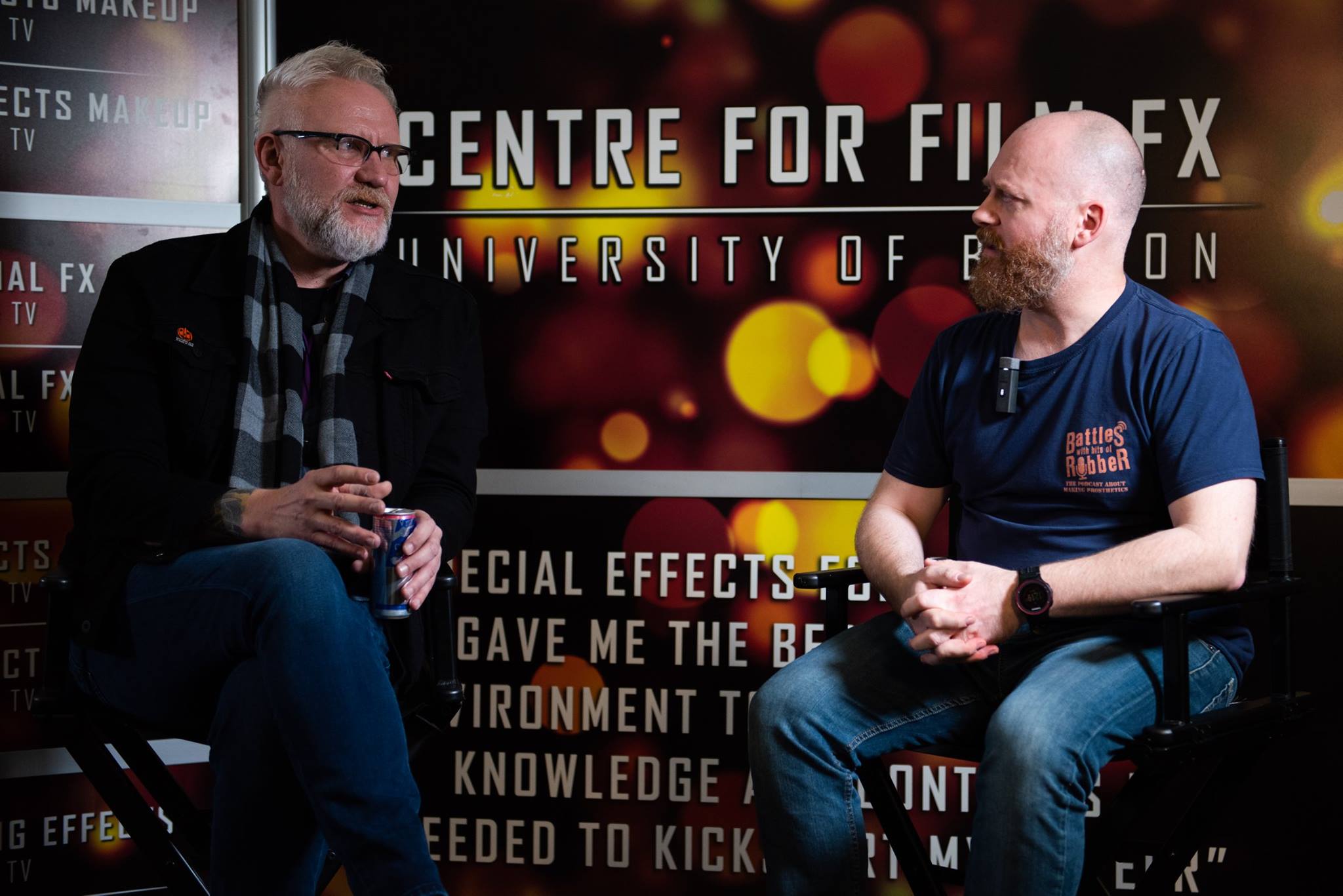
I also got to talk lenses with the team from Cantor Nissel who make lenses and eyes for both medical and theatrical uses. It was a real education, and something we will look into more in upcoming episodes.
Next year the show will be even bigger and better!
New Cap Plastic
Thanks to the Motion Picture FX guys for sending me a sample of their new BALDFX "CHIPS". I tried it and loved it - so soft and flexible, it makes a great encapsulant for appliances as well as for bald caps.
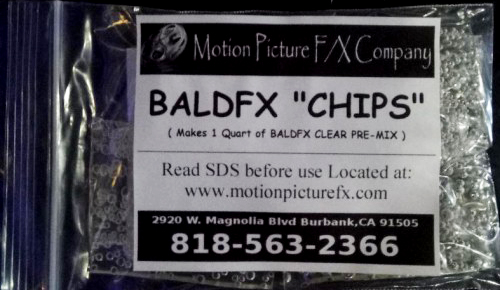
________________________________________
Ok, so you're new to this. Maybe you have just left makeup school/a different career path or job/ made a new life for yourself but now the first opportunity comes along and you have nothing to compare yourself against to know what is expected of you. You don't want to appear too harsh in case you scare them off, nor do you want to be a pushover.
Understand that we all must get by. Life costs money. Standing still and doing nothing costs you money. A great exercise is to sit down with a calculator, tot up all your outgoings for a year.
- Add up your rent/mortagage payments, car, fuel, food, utilities, phone, computer, insurances and whatever else allows you to function for any given year.
- Add it all up and divide that number by 365.
- That number it gives you is how much it costs to stand still for one day.
You need to make at least that each day to break even and to be able to afford to come back tomorrow. You presumably need to make a profit, so that when you are sick, older or want a better set of circumstances, you will have accumulated enough to tide you over.
Using this is the starting point you can see that your time really shouldn't ever be free. How much you can charge for your time depends on what you can offer the client. Remember, a client will only pay for the problems that you can solve for them.
Listen to the podcast for more on this!
Thanks again for listening, and if you would like to support us, as ever there is one thing you can do that helps more than anything - tell someone else about the podcast! Share this on social media and tell us how we are doing!
You can email us here direct at stuartandtodd@gmail.com
We appreciate your attention!
- Stuart & Todd
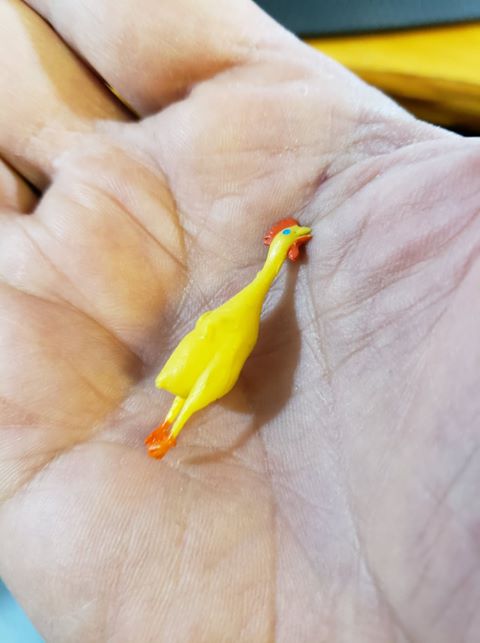
We are back with more Don!
Even though I was there when we recorded, I still get a buzz hearing back what we spoke about.
Simply put, Don will make you better and get you thinking about sculpting. In part 2 we spoke to Don about: - Ego - Looking for the positives - Music whilst sculpting - Using the same tool to get many results - Sculptures that want to come out - Deadlines - Chisel shape tipped rubber clay shapers
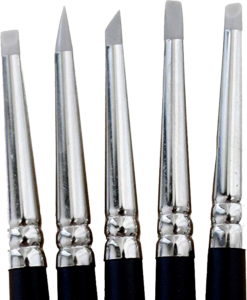
Silicone-tipped Clay-Shapers
![]()
The Kemper D9 that Don refers to as a very versatile tool.
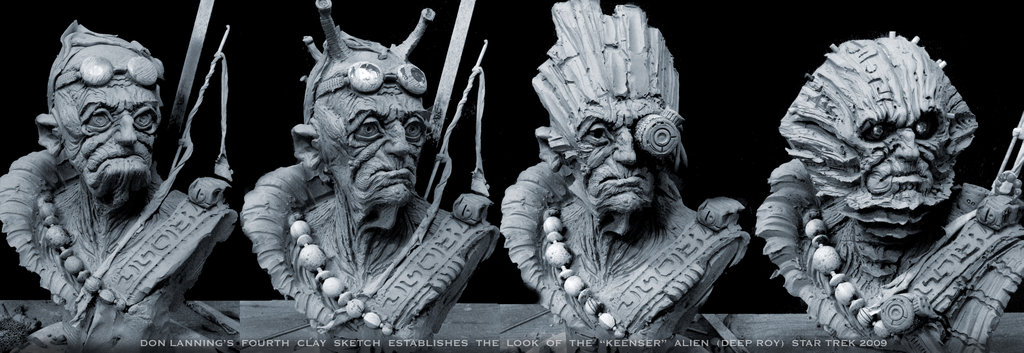
At the time of writing, Don had just finished his workshop in the week leading up to the Prosthetic Event 2018, which was fantastic. His stage spot was rammed, and it was great to see a live audience enraptured, although I shall always cherish this podcast opportunity where just the three of us got to share Don's space.
Incidentally, Don posts the latest upcoming workshop dates on his Don Lanning's D3 Studio page. If you can get the chance to go to a class, I'd urge you to do so.
He really is very good at making you better! Those classes fill up fast, so check on the latest dates.
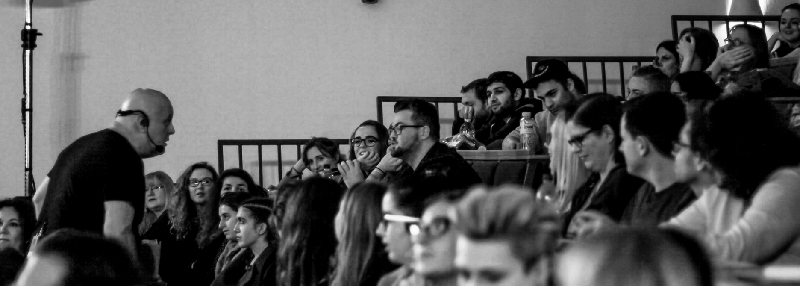 The Prosthetics Event 2018 was a magical day!
The Prosthetics Event 2018 was a magical day!
Thanks again for listening, and if you would like to support us, as ever there is one thing you can do that helps more than anything - tell someone else about the podcast! Share this on social media and tell us how we are doing!
You can email us here direct at stuartandtodd@gmail.com
We appreciate your attention!
- Stuart & Todd
Prosthetics Magazine is THE magazine to check out if you are serious about learning more about making prosthetics. It only comes out 4 times a year, so each edition is packed with info, tutorials and up to the minute interviews with the folks who are doing this stuff for real!
This latest edition, #13, looks at the creation of the new Mask from Halloween with Christopher Nelson and Vincent Van Dyke. There is also an article on how a prosthetic appliance was made (and applied with great success) using purely 3D printed moulds. The future is now! https://www.prostheticsmagazine.co.uk/
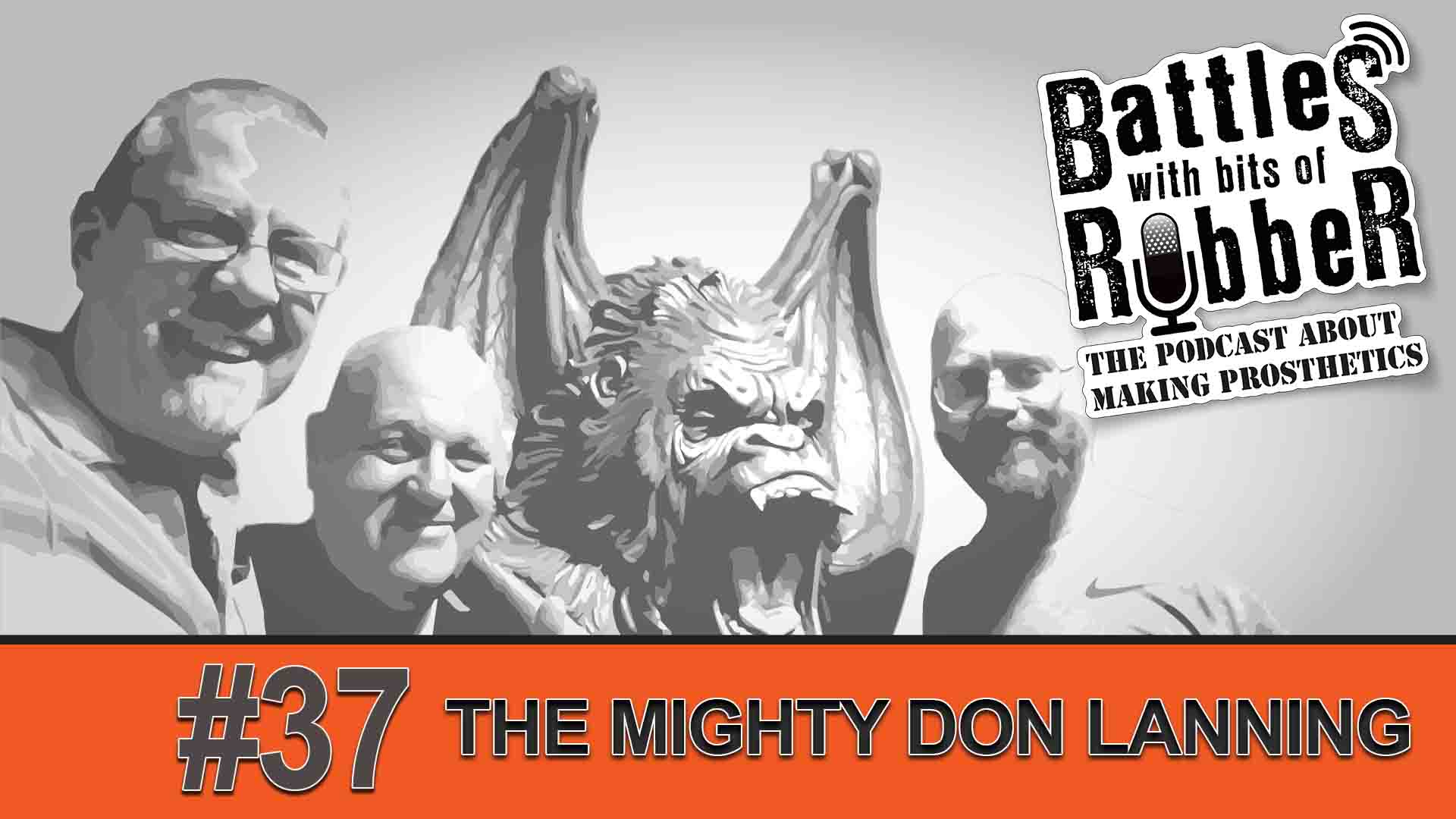
If you have any sculpting ambition or love for any monster movies made in the last twenty years, then you should know the name Don Lanning.
Not only is he a gifted craftsman who has worked hard for his place, but he is also a gifted teacher who can help make others better, and he is damn fine fella the whole time he is doing it.
Don has been working away on productions for years as a hired gun on well know movies such as Hollow Man, Ghosts of Mars, Vanilla Sky, Hellboy, AVP, Silent Hill, The Avengers, and Aquman as well as TV shows such as The X Files, Nip/Tuck, Star Trek, The Strain, and Bright.
Possibly though, the pivotal moment which brought his method into the limelight was the Stan Winston School For Character Arts videos such as Sculpture Techniques and Character Design.
We weren't just treated to a 'how?' class, but also a 'why?' class and looking at the feelings on experiences whilst sculpting.
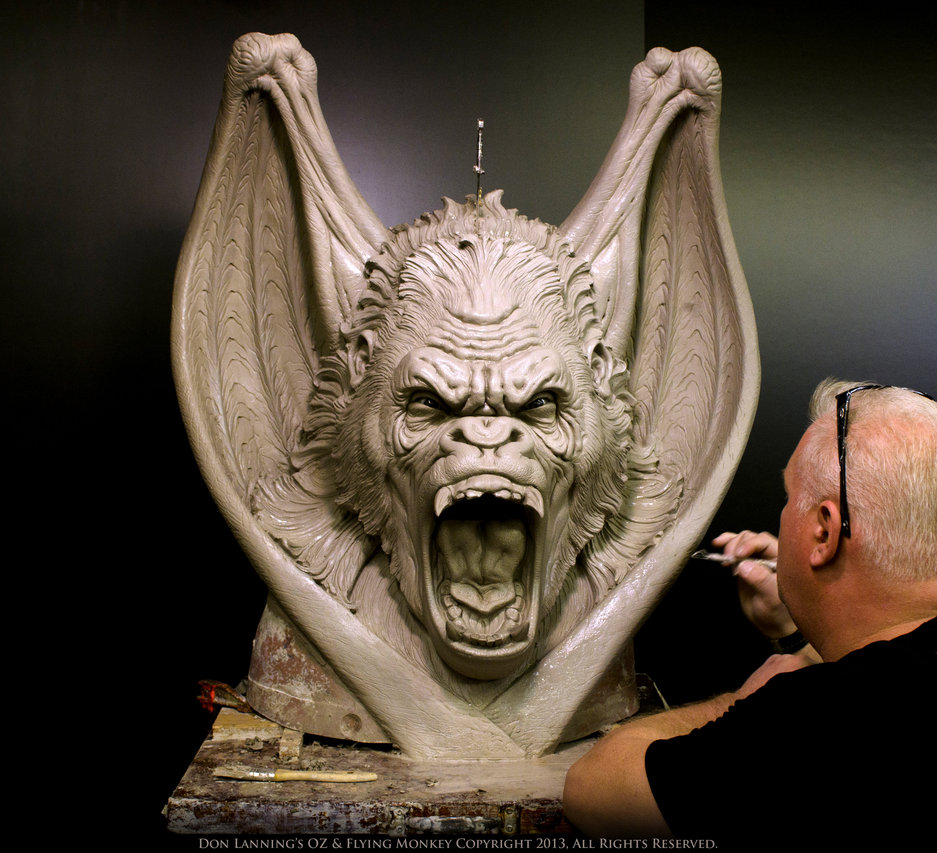
I often think sculpting classes are among the hardest to instruct largely becasue it is a slow, deliberate act which allows the brain to open up and weep out all the negative things everyone has ever said about you or that you imagined of yourself. It's all bullshit of course, and it takes someone to help you snap out of it and keep focus
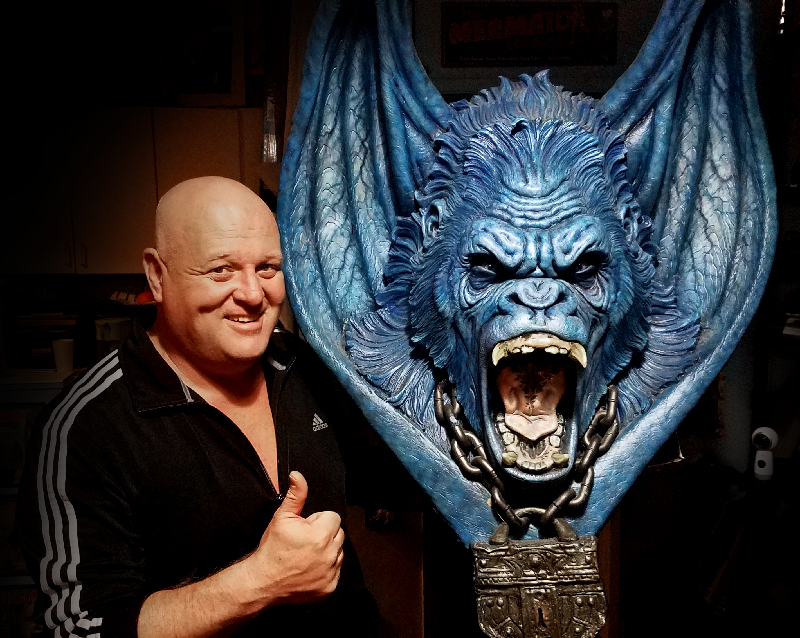
Don Lanning's love of the Wizard of Oz is made real with these series of outstanding character studies. Check out the Facebook page to see more.
Simply put, you CAN do it if you want to. Maybe you feel like you're not great yet, but if you enjoy doing it then you WILL improve. If that matters to you, then to hell with all the naysaying. After all, people often say things about themselves that they would never say to another person - and looking at what you can actually do to overcome and improve your shortcomings is what Don does best, especially when you are face to face with the man.
"I was born with no talent whatsoever - I had to fight hard to get everything I got."
Todd and I took a trip down to his studio to talk with the man himself, and we got into so much dense material, we decided we had to split this one into two parts. In part 1 we talked to Don about:
- How to actually start sculpting
- Dealing with a blank canvas
- Channeling nervous energy
- Looking for what makes good art
- Getting better
- Making the changes for clients
- Looking for what feels 'right'
- Pivotal moments
- Looking out for scam internships
You'll also see a love of magic and magic stores crops up again!
Thanks again for listening, and if you would like to support us, as ever there is one thing you can do that helps more than anything - tell someone else about the podcast! Share this on social media and tell us how we are doing!
We appreciate your attention!
- Stuart & Todd
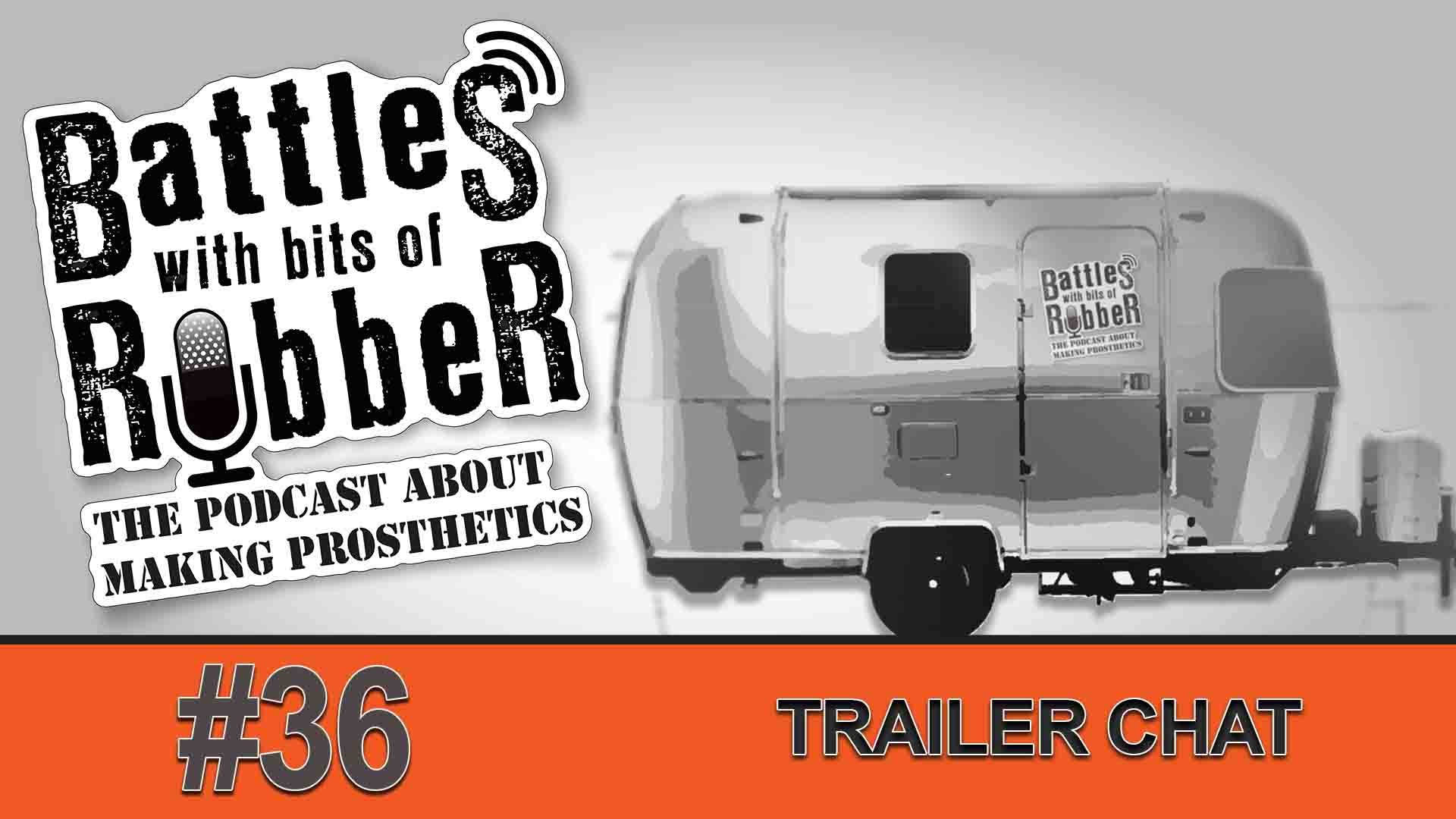
After the madness of Monsterpalooza 2018, we had the chance to grab the gang for a wind down chat to debrief about the trip and talk about what we got up to.
It was a fun time, and I hope the warmth of a truly magical few days comes across, as Todd and I were truly humbled at the non-stop kindness and generosity we were liberally soaked with.
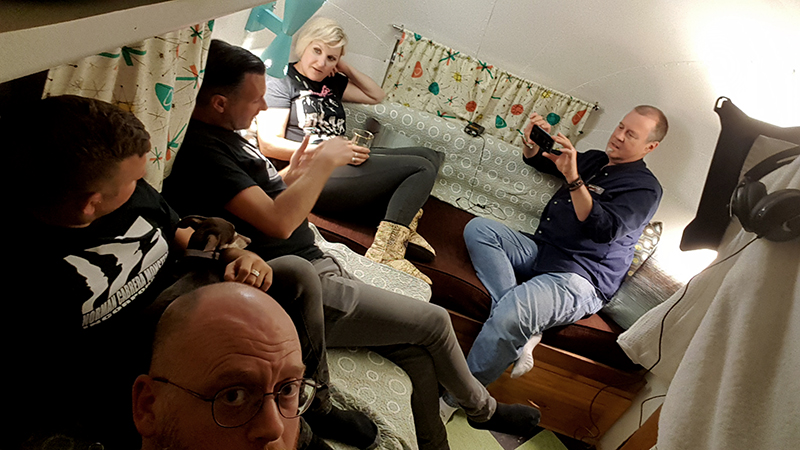
Anticlockwise from bottom: Me, Sam Shuck, Adrian Rigby, Eryn Kreuger Mekash and Todd Debreceni hanging out in the magical trailer I stayed in.
Adrian and I met in 1995 when we both travelled out to LA to take a look at the FX scene and see how it worked at the start of what we hoped to be our careers.
It was so nice to be back out here 23 years later having been able to have those very careers we so badly wanted. I think that story needs it's own post, where we spent the day at Optic Nerve studios, on the set of Babylon 5 watching an episode shoot, and seeing the makeup touch ups happening with Greg Funk and Fionagh Cush working their magic. What a great time we had!
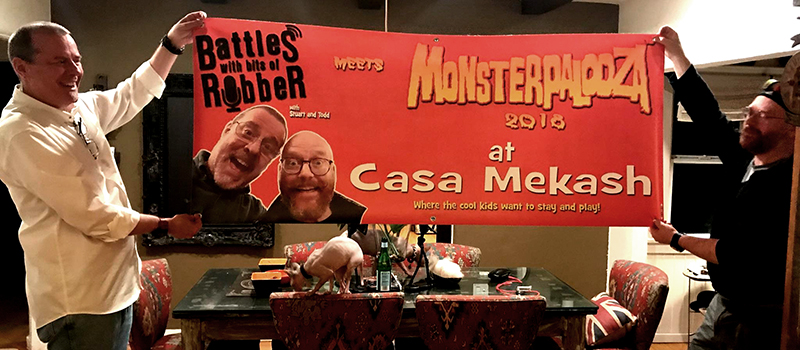
Anyhow, Todd had this cool banner made up to celebrate, and I'm so excited to share the podcast with you.
If you want to get in touch with us direct, email stuartandtodd@gmail.com and take a look at our Facebook page.
Until next time, keep it bloody!
Stuart & Todd
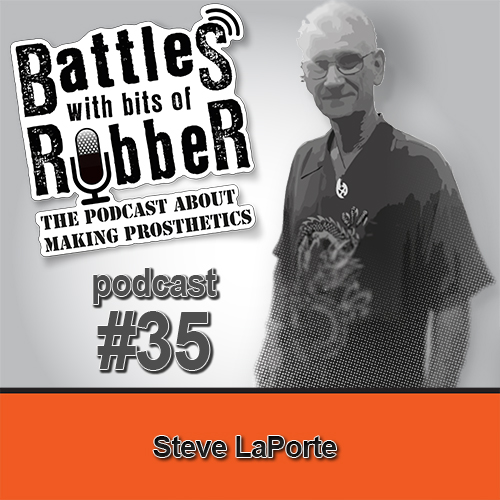
Steve LaPorte was a joy to speak with. For one thing, he is incredibly talented and has a fantastic body of work.
That aside, he also recalls exactly how he got there and can track back the step by step process of how he got there.
It’s a wonderful thing when someone can trace back their steps and know how they got to where they have and are keen to help others understand what is important.
Steve talks about the importance of knowing how to make things work rather than always relying on an endlessly supplied workshop to solve every problem. Knowing how to pull things together on the spot is a great skill to have on set but ironically is how most people start out when they don’t have a lot of kit.
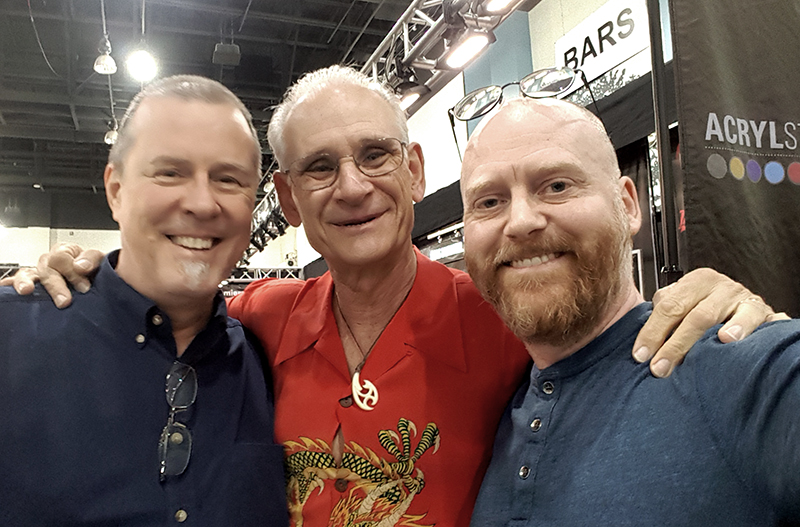
Hearing who he has worked with is like a who’s who of the makeup effects world. Knowing good, solid makeup skills as well as using appliances and working in a workshop come together to make a very capable artist whose versatile skillset make for a great resume.
We see again and again in these conversations with makeup artists how living a little life first and getting involved in the real world before settling on a career path can be so beneficial, as you can figure out who you are a little clearer before throwing yourself into an industry.
Steve also goes a little into his interest in the circus and particularly clowning, and how learning from the people around you is important. It really helped set him up for working within the film industry and dealing with people and appeal to their better nature. Clowns nowadays are often seen more as scary tropes, like Pennywise from IT and Killer Clowns From Outer Space.
Clowning was designed for fun and joy, to create laughter and cause people to drop their guard and experience joy, and Steve looks at how he wants to reclaim the clown for laughs rather than screams.
Like he says (Steve credits Leonard Engleman with this maxim), "Retire to something rather than from something." He is a busy chap, and has plans to bring some very cool things into the business. Steve has such a pleasant manner and it really was a joy to speak with him. Todd and I were grateful that he gave up his time to chat to us so candidly.
He mentions a book by Wayne W. Dyer - The Shift: Taking Your Life from Ambition to Meaning, and I link it here if you want to check it out.
Many thanks for listening!
Til next time
- Stuart & Todd
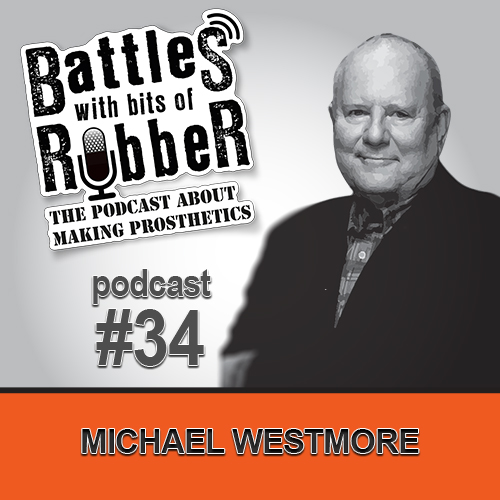
Michael Westmore has done battle with rubber for a few shows, it's fair to say.
With a long career spanning every aspect of makeup, he comes from a several generation deep family which practically bleeds greasepaint. Many know of his work on Star Trek, but the breadth of his experience is quite something.
To read more on the subject, check out a brief history of it here, on Wikipedia or track down a copy of 'The Westmores Of Hollywood'.
Awared the Academy Award in 1985 for Mask, a moving story of Roy L. "Rocky" Dennis who suffered from Craniodiaphyseal dysplasia, Michael is well placed to comment on extreme prosthetic makeovers to subtle, undetectable straight makeup corrections.
Michael has recently told his own story in 'Makeup Man', a memoir made up from a collection of stories charting his progression in the industry, and I would recommend it as a great read for anyone with an interest in makeup and how it works within the film industry!
It's taken 14 years to assemble the stories, going from the 60's to the 2000's with loads of extra snippets. It really is a complete work covering the celebrities he worked with and doesn't shy away from the warts and all experences of a working makeup artist who deals with celebrity skin. A complete reliving of a career!
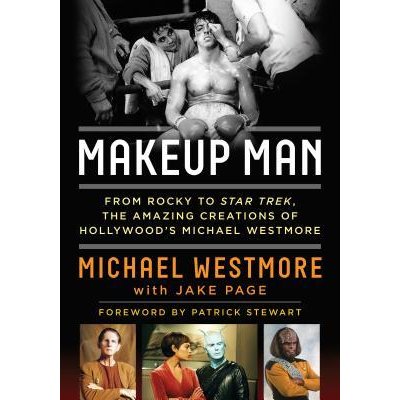
Todd and I recently had the pleasure of sitting with the man himself at Monsterpalooza 2018, and chatting about:
- How practice is the key
- The increase of materials available
- How to get the best from time at makeup schools
- The importance of art and art schooling
- The new adhesives developed by Westmore Effects
- The amount of available talent now
----------------------------------------------
Michael Westmore Jr was present also, and as the force behind Westmore Effects (check the facebook group) he chatted to us later about the developments coming up and the new exciting materials he has developed to addess the issues those of us who stick rubber onto skin face on set.
(Click here for retailer info nearest to you).
We hope you enjoy listening to this one!
Till next time
-Stuart & Todd

Contact lenses are pretty easy to find nowadays. It wasn't always so, and the increased use of lenses has meant an increase in opportunities to have problems with eyes caused by them.
We chatted to Cristina Patterson of Eye Ink FX about eye care and lenses, especially in the light of many people around us who had created characters for Monsterpalooza using lenses. Many conventions will have extensive makeup characters with lenses bought online or in costume stores for not a lot of money. These lenses may be available in stores, but is it wise to buy and use them?
We also chatted to Bob Smithson, a lens tech with many years experience fitting lenses on set and dealing with the front line of lenses on a production.
http://www.learnmakeupeffects.com/33lenses/
Todd and I had a great morning chatting with Allan A. Apone and Brad Look at MEL headquarters (Makeup Effects Lab) based up in North Hollywood.
MEL now occupies a huge area of workshops and produces effects for shows as well as products used by artists in the industry, including PAX paints, baldcaps and appliances. Starting out as a small lab in 1978, it now boasts some 18000 square feet of facility.
Their website is MEL Products USA and is worth checking out!
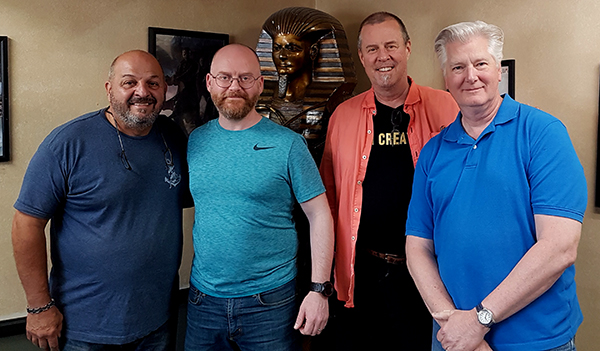
Our tour took us from machine shop to foam room, silicone lab and woodshop, all surrounded by a million artefacts from jobs in the past.
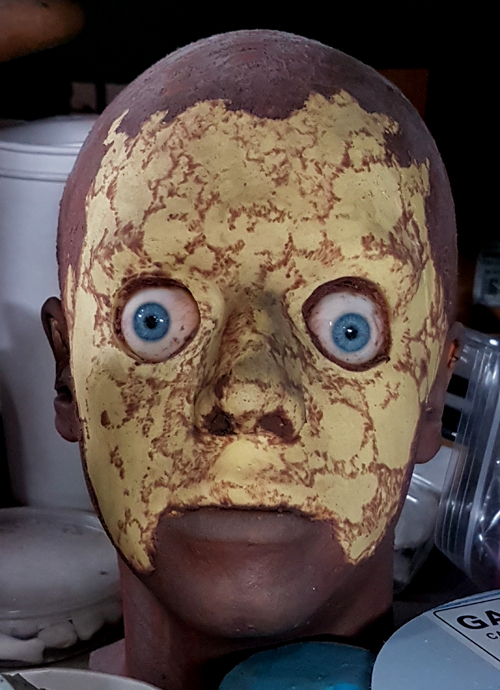
We sat and talked about the recent Monsterpalooza weekend, as well as the business of makeup and what really counts. As seasoned makeup artists with many years experience on set, Allan and Brad made this episode of the podcast a gold-loaded listen for makeup artists.
Like Brad says, "If you don't know highlight and shadow, it doesn't matter what you are putting on - it won't look right!". Despite the noise of competing companies vying for our attention and wallets, this really is the key message. Know your subject, know yourself and above all, respect the craft!
- Incidentally, MEL have a podcast called 'This Week In Makeup' which is worth checking out!
You can subscribe to our podcast, Battles With Bits Of Rubber on iTunes, Spotify, Soundcloud and pretty much all podcatcher apps or platforms.
Thanks for listening! You can contact us at our Facebook page or email direct stuartandtodd@gmail.com with suggestions, feedback, or just to say hi.
The blogpost for this episode can be found at http://www.learnmakeupeffects.com/32respectthecraft/ .
Til next time
-Stuart & Todd
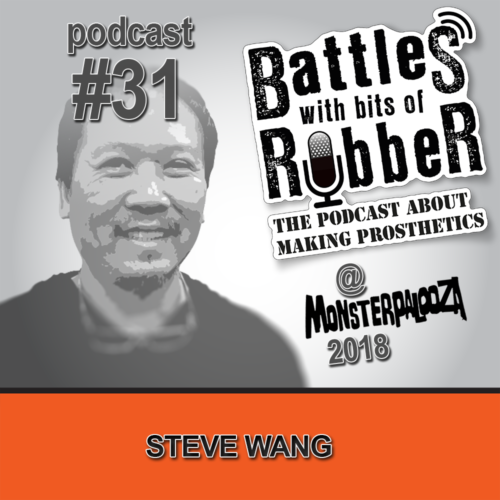
One of the great things about Monsterpalooza, and other makeup FX heavy trade shows is you get to meet the people who make a life around doing the work, and who care enough to help others do it too.
For my money, this chat with sculpting and creature legend Steve Wang was the most potent use of 20 minutes anyone could have. Steve was in high demand, but Todd managed to get him for a short timeslot on the mic and we jumped straight in with the sculpting talk.
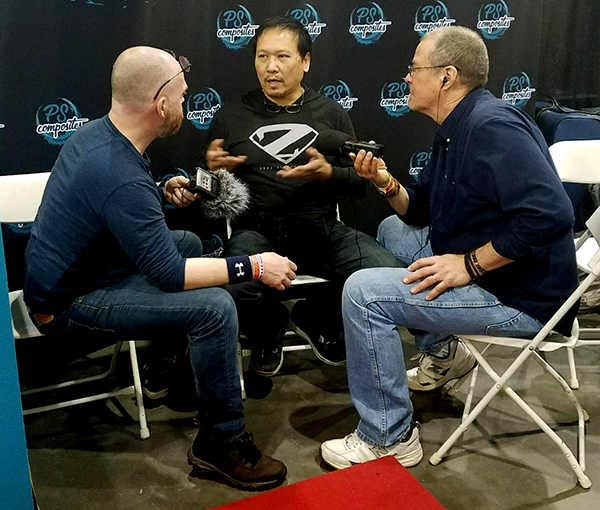
I wanted to get a grasp on why ZBrush was still a mystery to me (and many others) and there is some golden wisdom in here which is worth hearing if you have been left blinking at the apparant dearted ship of digital creativity.
If you feel like you are on the dockside, waving sadly at a ship of endless creativity disappearing into the distance and cursing yourself for missing the boarding window, then you need to it down, listen up and dry those tears!
Putting this together and listening to it put me right back there and fired me up, so get stuck in and listen. Steve has such economy of explanation, he doesn't waste time or fluff around - he gets straight to the point and lands that info sqare in the part of your brain that is ready to go!
Check out Steve's instagram @stevewangcreaturecreator and alliance studio and elitecreature.com.
Thanks for listening. You can email the show at stuartandtodd@gmail.com, visit the facebook page and join us there. -Stuart & Todd
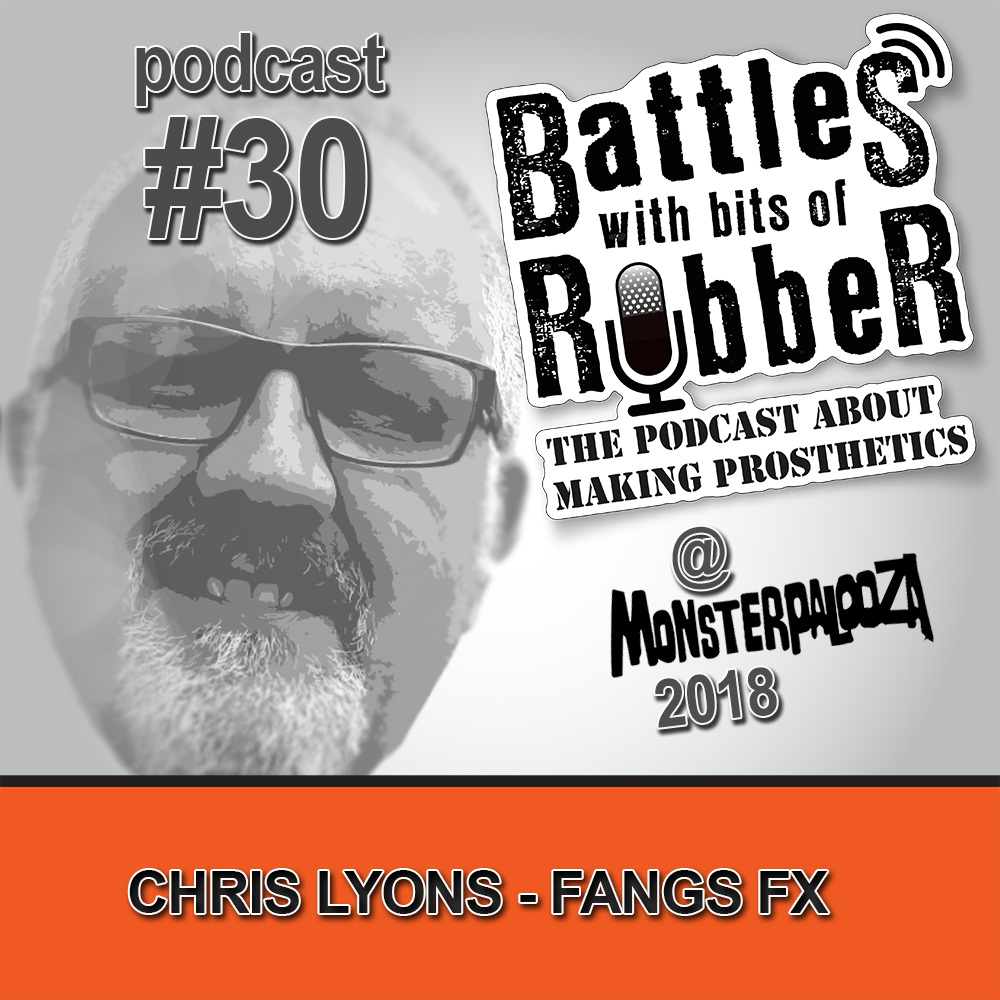
Chris and Fangs FX is who we call when we need teeth, but there is a lot more to Fangs FX than just...well...fangs!
This is the first of a series of interviews Todd and I did at Monsterpalooza 2018, a three-day event in Los Angeles which was busting at the seams with visitors, demos and vendors. It was amazing, and Todd and I applied my Bela Lugosi makeup for the Rick Baker Tribute on the enormous PPI Premiere Products Inc stand.
Blogpost: http://www.learnmakeupeffects.com/fangsfx/
We grabbed Chris for a chat outside the venue as it was far quieter than inside, and talked teeth, drill bits in the mouth, loose teeth, missing teeth and how much hiding in plain sight takes place.
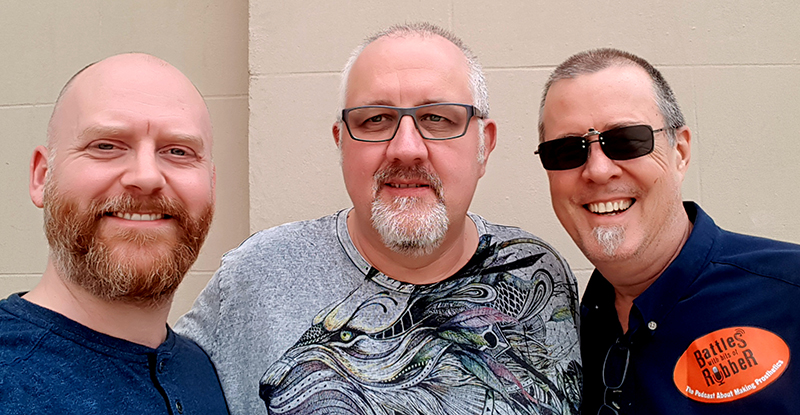
Making and fitting teeth requires the use of some pretty serious chemicals and hardware, and putting these things into performers mouths is a serious responsibility as you will hear.
Fangs FX was established in 1984, and has an outstanding list of credits. If you have never heard of Chris or his team, then you will certainly have seen their work. Check out their facebook page and Instagram @fangsfx.
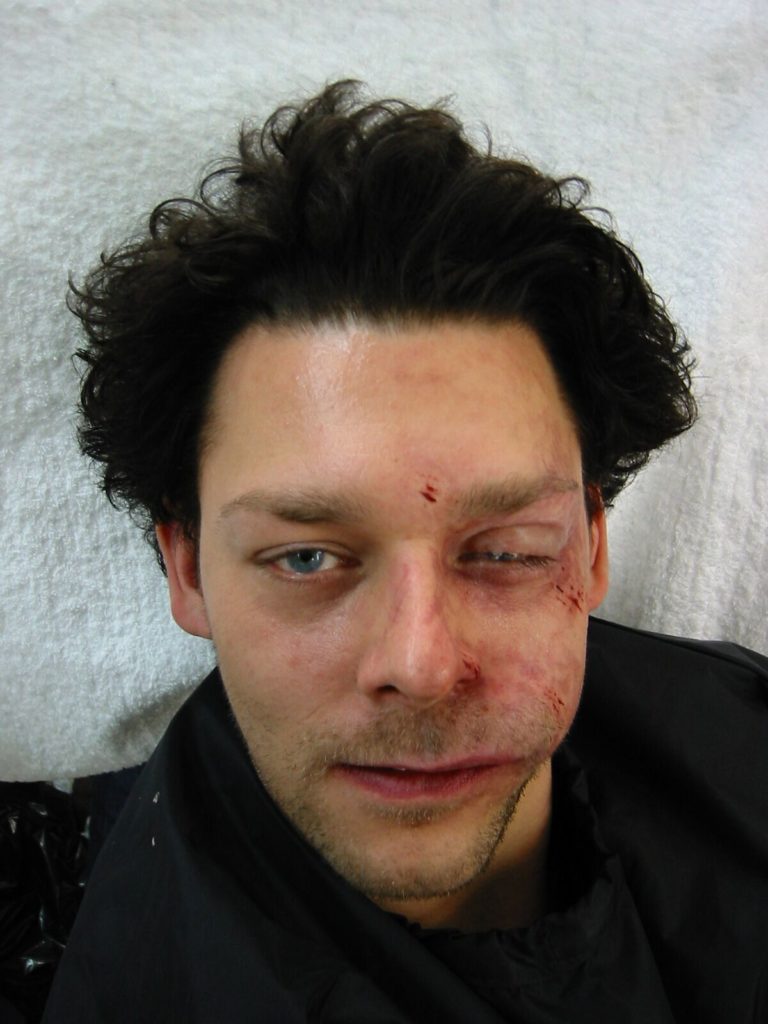
Richard Coyle from BBC TV show 'Strange' which maks use of swelling provided by a dental plumper rather than an appliance. Makeup by Jan Sewell.
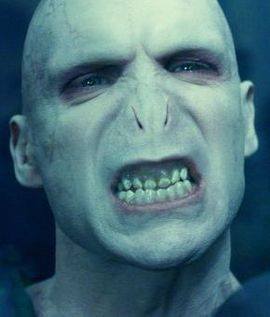
You know who wearing some makeup by Mark Coulier. Nose wiped out digitally, teeth made grim practically.
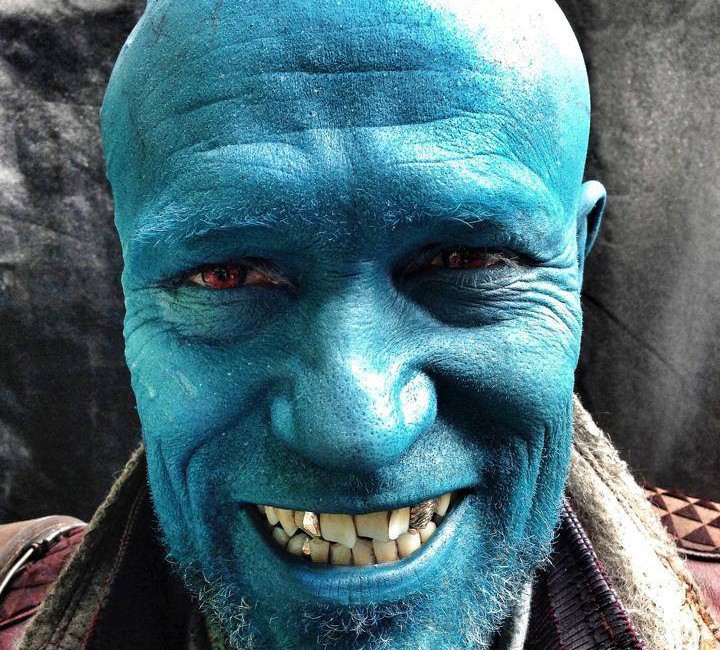
Michael Rooker from Guardians of the Galaxy, makeup by David White.
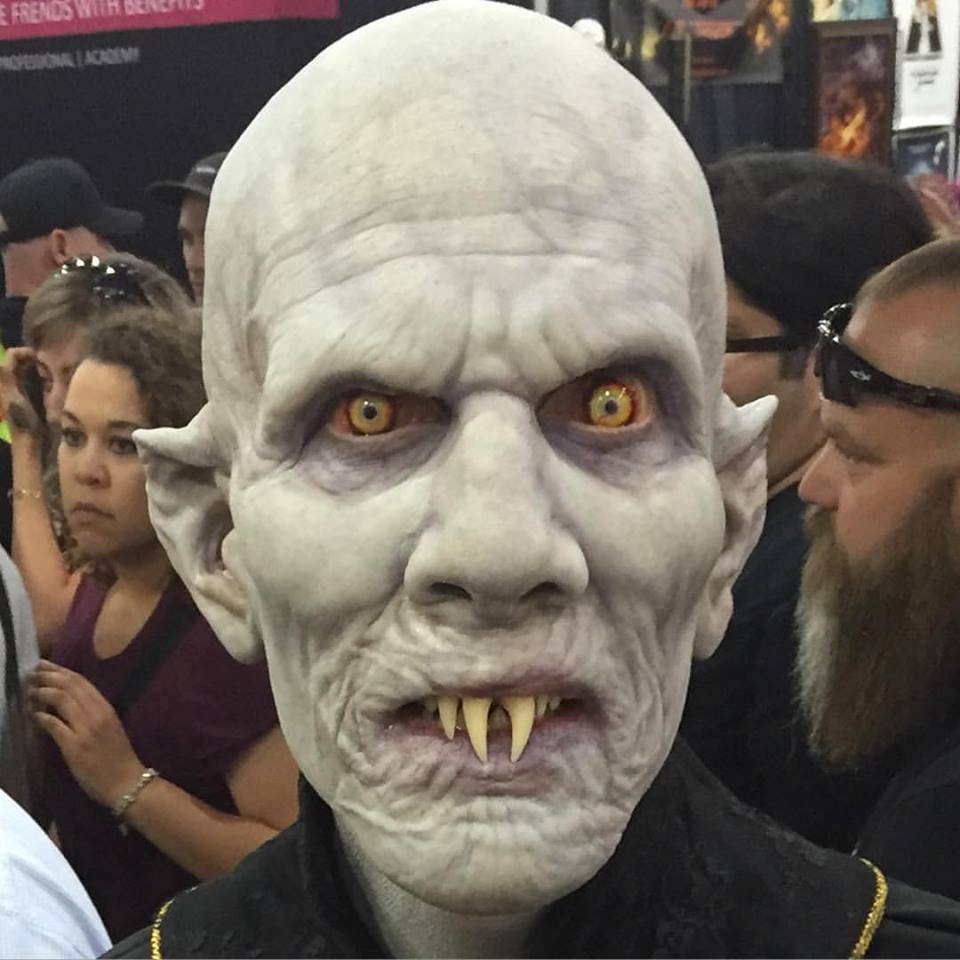
Demo by Mark Coulier, reimagining the Nosferatu style Barlow from Salems Lot.
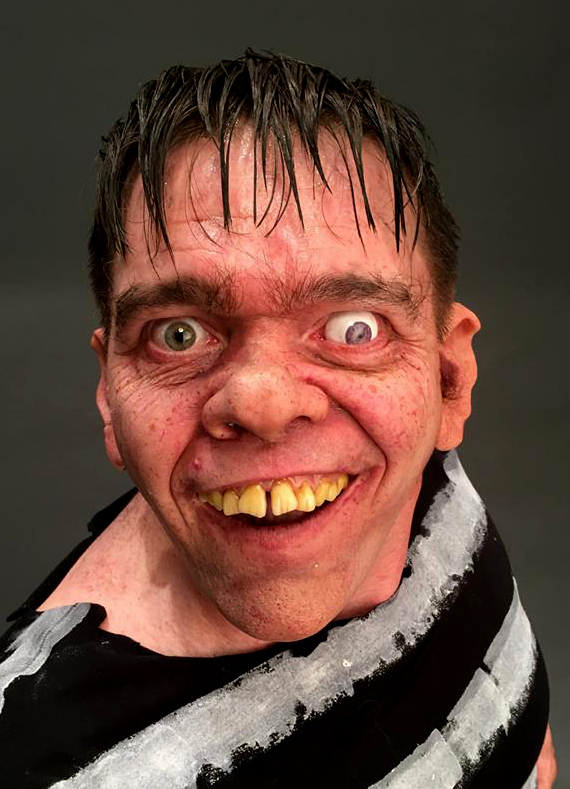
Makeup demo by Stephen Murphy for PPI. Model Ben Palmer.
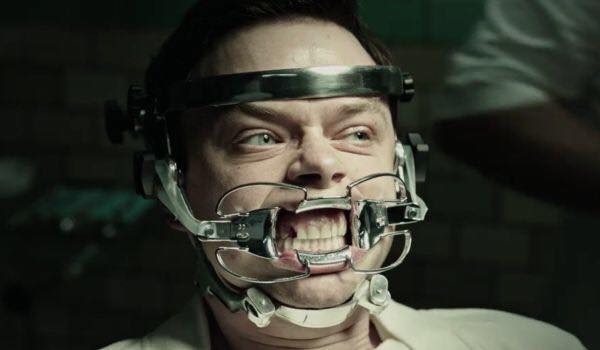
A Cure For Wellness featured some neat teeth gags.
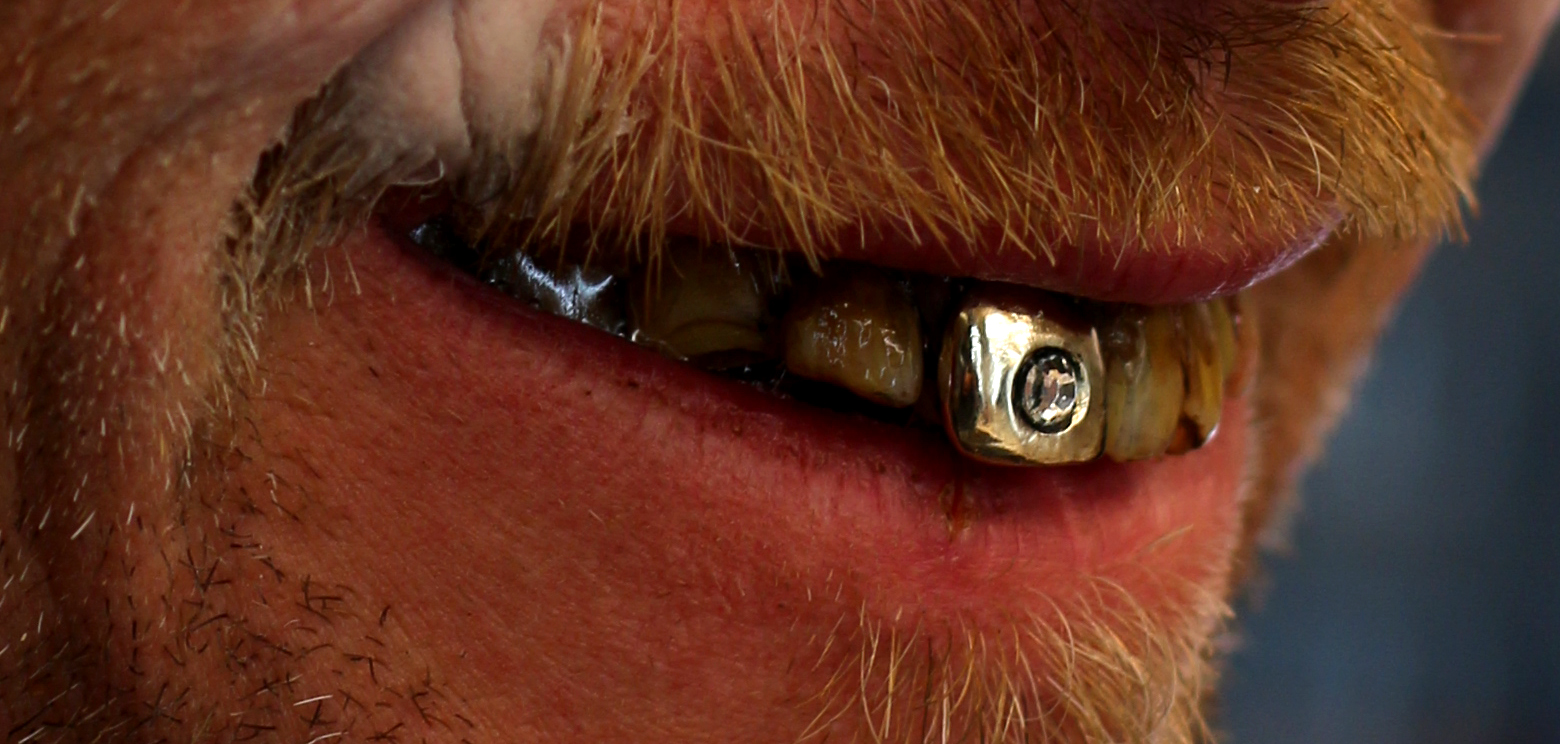
Paul Kayes' teeth for Mutti Voosht in 'Pan'.
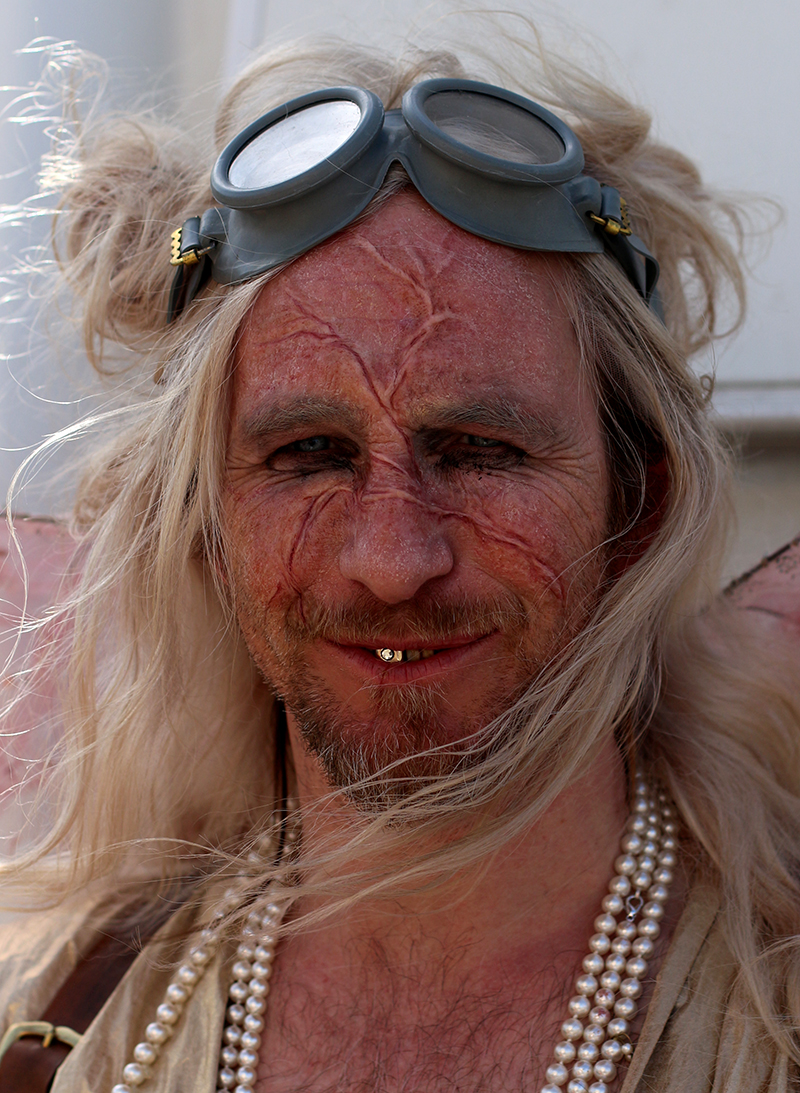
The test makeup with teeth in place for Paul Kayes character Mutti Voosht for Pan, cut ultimately. Makeup by me.

Spencer Wilding wearing a Rick Baker wolfman makeup and some oustanding Fangs FX Dentures.
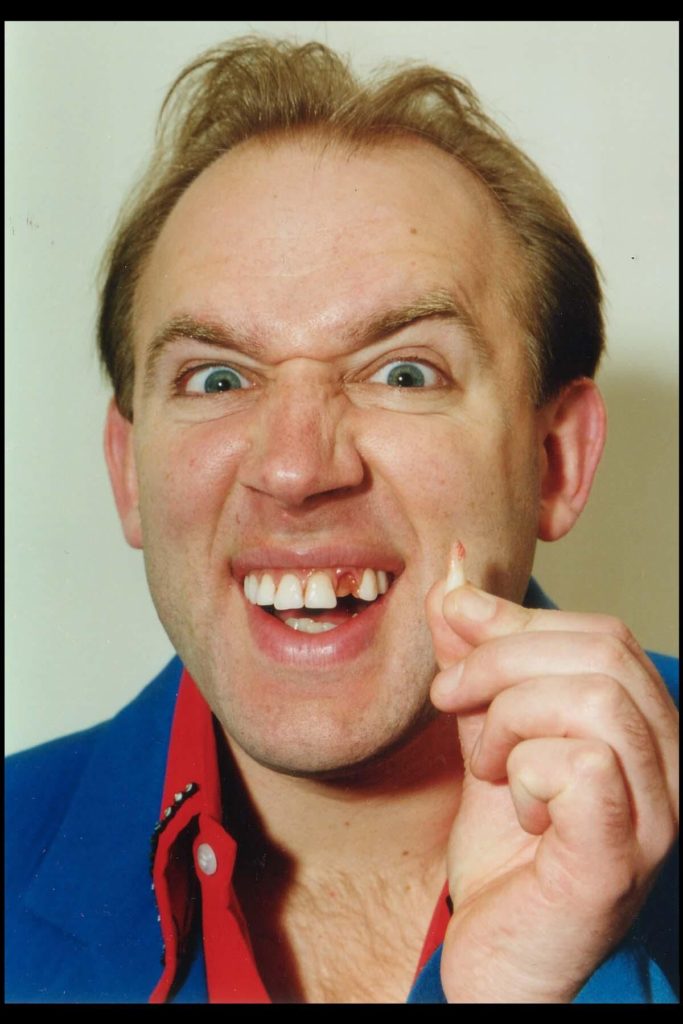
Tim Vine comedy sketch show wth removable tooth gag.
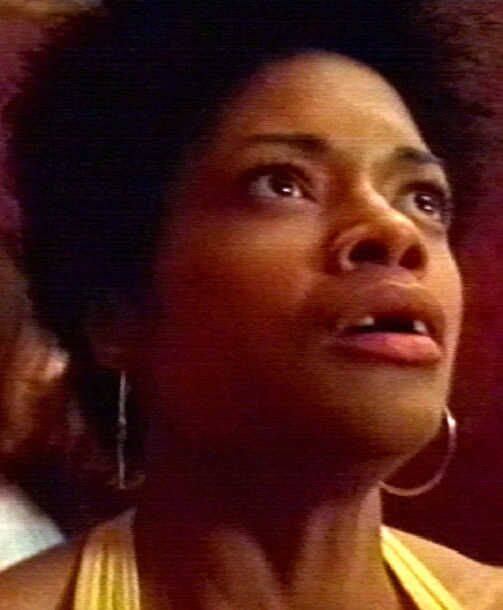
Naomi Harris in drama series 'White Teeth' missing the front four teeth - a worst case scenario for a practical tooth gag if all real teeth are present.
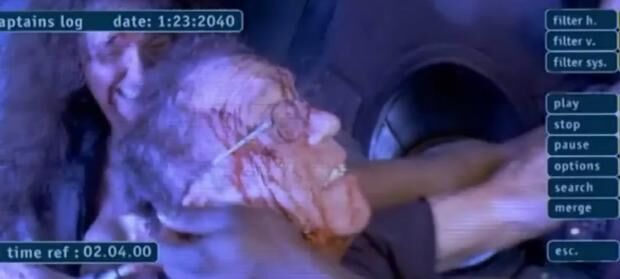
Gags, where something has to happen, move and perform on cue is a tough thing to pull off...
]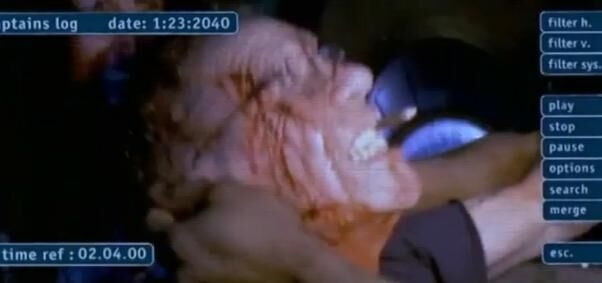
... but even a moving drill bit appearing through teeth live in-camera is another day for Chris and the team. The stuff nightmares are made of!
As ever, email us at stuartandtodd@gmail.com or drop us a comment our facebook page.
Remember to floss regularly!
- Stuart & Todd.
So, this is my turn at soloing for a brief episode of Battles with Bits of Rubber.
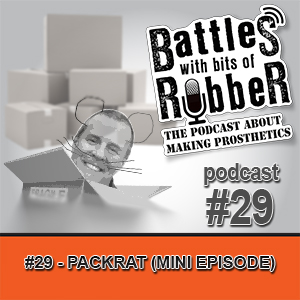
And, depending on responses to my musings, perhaps Stuart and I can extend this into a longer broadcast with tips from you all on how to get rid of unwanted and no longer needed stuff.
Hi. My name is Todd. And I’m a pack rat.
(Hi, Todd!)
Let’s face it, most of us have too much stuff. Stuff we don’t use, stuff we don’t need, and stuff we don’t even remember getting.
So how do you get rid of it?! I can look around my office, shop and studio and wonder when the crew from Hoarders is arriving. Maybe that’s a bit of an exaggeration, because at least I’m not navigating through canyons of stacked magazines and newspapers, but… it’s easy to lose sight of my office from certain vantage points because of props, molds and masks… I can be looking for something - and it can even be in plain view - but it will take me a bit to see it amidst everything else. I either need more space, or less stuff. The answer is less stuff.
But how do you part with something you may need later? There’s a psychology to it… maybe even a pathology… I’ve been collecting and adding to bins of doodads and thingamabobs (I swear they even multiply by themselves!) for what seems like eons that I know I’ll find a cool use for someday.
I need help. I’m never going to use that shit. Who do I think I’m kidding? 2018 may be the Year of the Dog for China, but for me it is The Year of the Purge. I started reading a book by Japanese author Marie Kondo called The Life-Changing Magic of Tidying Up - The Japanese Art of Decluttering and Organizing.
I haven’t finished it yet, but the gist of it is this: Figure out which items ‘spark joy’ and which don’t. The items that don’t, heave ho! I’m still trying to wrap my head around that, but I confess I am making headway.
Perhaps I need to put in a call to American Pickers. It’s just that I’m in a business that requires stuff, and lots of it. There has to be a way to make do and do well with a leaner inventory and library of stuff. This is my start. Take a listen and let us know what you think.
Cheers,
Todd
----
For the blog post on this, check out http://www.learnmakeupeffects.com/packrat/
I had the great privilege to be asked to teach some masters degree students at Theaterakademie August Everding in Munich, Germany recently.
I had a splendid time! The three students I worked with all had ambitious, figurative projects which they had been working on for some weeks when I arrived for my five day stint there.
- Daniel Riedl had made a full-size figure leaning out of a bath and was in the final sculpting stages preparing to make ready for moulding.
- Julian Hutcheson had just moulded his sculpt of a male torso, and in the week we mixed and cast out the silicone in the chosen flesh tone (Moldstar 20 from Smooth-On).
- Caterina Veronesi had sculpted a scale figure of herself which will be cast in silicone and was also in the final sculpting stages and preparing to make the mould.
We had a great group chat to discuss how things work there, the education system (It's a free, government paid education which requires an extensive interview process which is a completely different model to the business-style version most makeup education systems work to) and the expected quality of work such a system produces.
One great project they had was to take classic roman marble sculptures and create realistic portrait busts based on them. This was a great project as it revealed the licence artists took to portray an idealised version of someone who perhaps would really have been a good deal less attractive in reality - the photoshop of it's day.
By studying the people depicted, discrepencies between reported ages and health reveal how much the idealised versions deviated from reality.
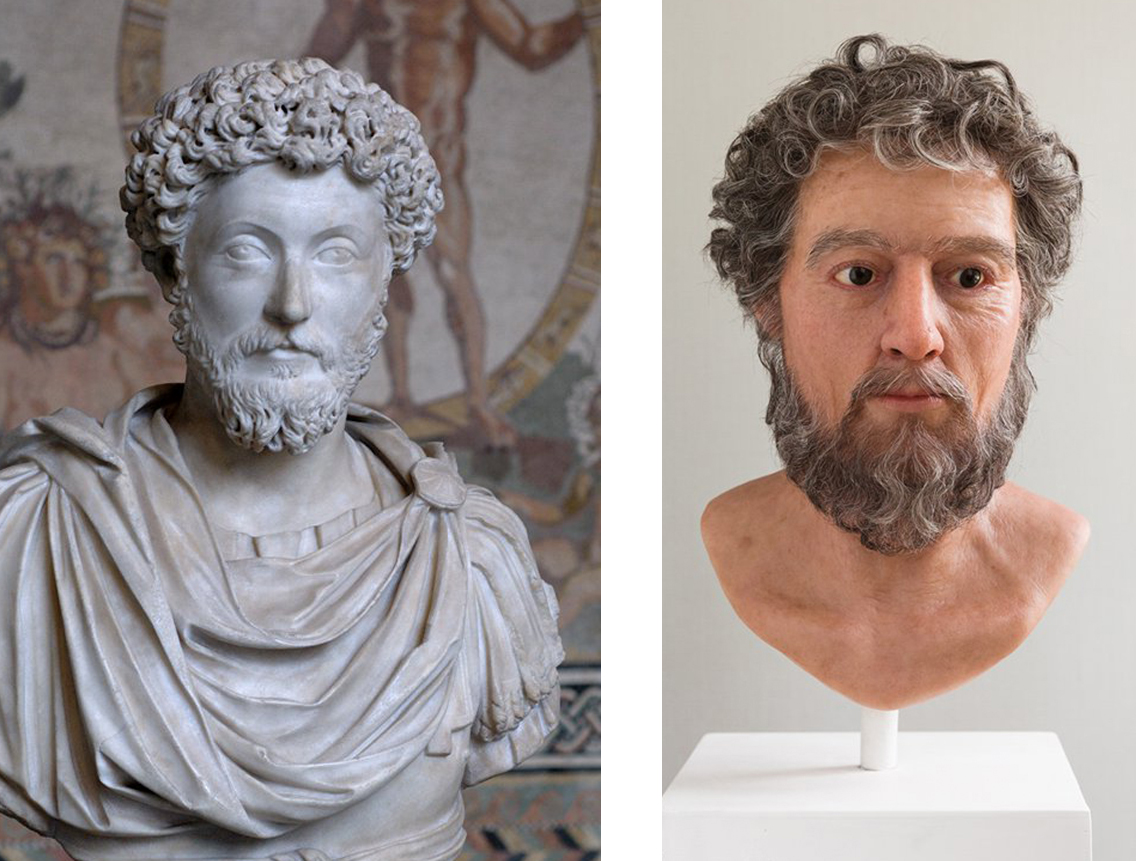 Pic: The original marble bust (left)and lifelike interpretation by Julian Hutcheson (right).
Pic: The original marble bust (left)and lifelike interpretation by Julian Hutcheson (right).
We also chat about how important beer is, making your own silicone wig blocks, using Monster Clay in a cold environment as well as the re-emerging point of the unavoidable trinity in all creative endeavours:
“Good – Quick – Cheap...Pick two because you can’t have all three“.
Dividing up large appliances
Michael Pennington got in touch through our email (stuartandtodd@gmail.com) with a question about how best to know where one should divide up appliance sculpts to break them down into smaller pieces. As Todd points out, much of this is a hangover from foam latex and the shrinkage which was inevitable with that material.
Silicone howver has none of these shrinkage issues, so we don't always need to divide it in the same way. That said, there are often good reasons to make a large appliance makeup into smaller, more manageable pieces.
The most logical place to do this is where the sculpture is at it's thinnest, and to try and keep edges in easier-to-hide areas where possible, such as where there is naturally a crease or shadow.
This was covered in more detail in a post from a while back, 'Floating Pieces' where you will also find a workbook with lots of in-depth information:
--------------------------------------------------
'Cheap Cheap Cheap' shouldn't be 'Shit Shit Shit'
Whenever we do a video tutorial, I can guarantee that someone will want to do it for less money. This is of course an inevitable occurance, as it is quite sensible to not spend money you don't need to.
However, there does come a point where substitutuing can become so obsessive that eventually the end result can just look like a pile of crap.
I do a wax scar, someone wants to make their own wax becasue it's too expensive.
If I had a makeup using good wishes and exhaled air, someone somewhere would want to economise on that somehow. (I know of people who have made their own wax, but if you don't put a dollar value on your time or you seriously have a great idea to improve it then fine - but to me wax IS the cheaper and quicker way compared to sculpting, moulding and casting an appliance!)
Whilst it is true that skill will 'work well with anything', I can assure you top pro makeup kits do not have packs of cured meats and jam instead of makeup products to use on their screen talent. If mashed banana looks just right for fat, or pus or brains then fantatsic.
Just don't extend that to 'I'll never need to buy another makeup product again'.
Once you've seen outsandingmakeup work done firsthand, then your priorities change. You decide instead of trying to do something as quick and cheap as possible, you would rather try and do something as good as possible.
Like that trinity of choices above, pick two and decide which you would rather have in your portfolio.
Latex is a material that often gets used in colleges because it is cheap and easy to get. Howver, it requires more skill to paint it to appear like real skin than silicone appliances, so there is always a trade off.
We would encourage you to get good at using cheap materials on a small scale, and then gradually scale up as you improve. Beware clickbait and attention grabbing use of foodstuffs - if there was a way of not buying makeup then we can assure you working professionals would be the first in line at the grocery store!
Jam may be fine for a kids halloween party, but it won't do you any favours in a working portfolio.
Till next time.
Stuart & Todd

Seven hours is a big time difference to deal with when trying to synchronise a podcast with two people.
To help with that, Todd and I figured adding some extra single features to help keep the show moving.
-------------------------------------
At Pinewood studios, I was teaching a great class which had me thinking a lot about what we teach and why. I seized the moment to share my observations which briefly were:
- When and why to premake pieces way in advance versus fabricating something up directly onto the skin.
- The difference between knowing about something and mastering it.
- Keeping a record of your efforts when trying to solve a problem.
- It's hard to be subtle - heavy handed is way easier to do.
- The importance of mixing the correct base tone to your appliance material.
- Making v buying fake blood.
-------------------------------------
Links you may find useful which were mentioned:
Rob Smith - Blood Podcast Part 1
Rob Smith - Blood Podcast Part 2
Maekup - David Stoneman's FX materials range
-------------------------------------
Questions or comments either on the blog, the facebook page or email us direct stuartandtodd@gmail.com
Until next time,
Stuart
Most people learn techniques and perfect them.
Some people then take those techniques and look at what can be improved.
Sangeet falls into this camp.
He is now pretty well known for creating high quality prosthetic transfers, moulds made which contain the appliances and are used directly in their application.
As far as I can ascertain, this system was developed by Conor O'Sullivan and Rob Trenton and involves making silicone mould inserts which contain the appliances during application, speeding up the process in the chair and allowing multiple appliances to be run from the same sculpt.
Sangeet has taken this process and developed many techniques and methods to push it even further. The transfer technique involves a lot of moulding and remoulding, and is not for the faint of heart but the results can be fantastic.
Check out his website studiosangeet.com/ and his range of anatomivcally accurate injury appliance flat moulds.
I chatted with Sangeet in his home studio in North London, and we spent four hours talking about moulds, standing on the shoulders of giants, using old-school materials in new ways. We covered a number of topics, including:
- Parental influences, how you absorb things you see in your parents rather than were actively shown, especially seeing them at work and learning to problem solve.
- Using simple materials in a more effective way.
- Seth Godin – what is school for. (Video: STOP STEALING DREAMS: On the future of education & what we can do about it).
- Scott Sigler, horror author https://scottsigler.com/
- Why simply knowing good techniques doesn’t make you a good artist.
- Art v Craft - Grayson Perry http://www.bbc.co.uk/programmes/b03969vt. (Grayson did a number of amazing lectures with the BBC called 'Playing to the Gallery'. I'd urge you to track them down to listen. )
- Grayson Perry documentary 'All Man' : https://www.youtube.com/watch?v=qvrC0i4pXak
- Howard Finster artist: http://www.finster.com/
- The Falstaff inflatable makeup from 1911, from Popular Mechanics. (It actually used silk, not cotton as I said in the podcast).
- Mouldmakers – Carl Lyon (https://www.instagram.com/carllyonfx/), (http://vvdfx.com/)
- Rob Freitas (https://www.instagram.com/freighttrain_moldmaker/) and his interview with Gunnar Ferdinandsen: https://vimeo.com/68578907
- Brian Best http://www.imdb.com/name/nm0078907/
- Blender, free and open source 3D software: https://www.blender.org/
- Artes Mechanicae https://en.wikipedia.org/wiki/Artes_Mechanicae
- The baggage from deifying techniques.
- VFX and production are not living in the past, but looking forward.
- Langers Lines – directions of skin tension: https://en.wikipedia.org/wiki/Langer%27s_lines
- Compare also with https://en.wikipedia.org/wiki/Kraissl%27s_lines and https://en.wikipedia.org/wiki/Blaschko%27s_lines
- Newtonian Fluid: https://en.wikipedia.org/wiki/Newtonian_fluid
- 3M and material development.
- The benefits of a folio of failures.
- Overusing appliances rather than working with the face.
- Incredible prosthetic artist Floris Schuller http://www.imdb.com/name/nm0776047/
- Acylic Polymers - Jesmonite, AcrylicOne, Forton MG
- I mentioned a plaster here in the UK called Alpha K.
- Dave Parvin, artist, who incidentally wrote a fantatsic series of articles collated in the book 'The Casting of Angels'.
Check us out on Facebook, https://www.facebook.com/stuartandtodd/ or email us direct at stuartandtodd@gmail.com!
If you dig this, then share it! It would really help us out to grow the podcast.
- Stuart & Todd
3D printing is having an effect on the way things are made.
This episode talks about what those things are, how it benefits us all and how you can get involved.
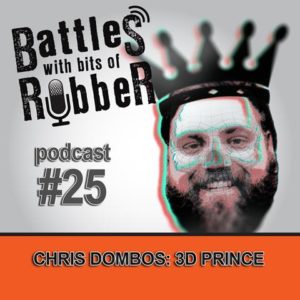
Chris Dombos knows a thing or two about 3D printing, and he is also a massive FX nerd so we got on rather well. Having met him first at LA IMATS in Jan 2017 (I discovered he had some of the original Lost Boys moulds), it made sense to catch up when he came over to London recently. Of course, I figured bring the mic and make a podcast out of it.
We recorded in a cemetery in London, so there are background noises. The whole gamut of life - cars, sirens, passing people, kids, birds in the sky, aircraft, wind – it’s all there in a place of the dead. It's all background, our audio is clear and we chatted about a number of great topics which matter to anyone who makes things. This includes:
- There have been a number of auctions as big FX shops started scaling down! This means that the larger shops have all but disappeared but more smaller operations opening up.
- Props Store London https://propstore.com/
- Importance of design and the danger of generic, the process informing the look.
- Occulus Medium: https://www.oculus.com/medium/
- Cost of CAD programs - the free and the fortunes.
- Digital sculpting revealing an artists lack of anatomical understanding, and how an understanding of form is essential to good sculpture regardless of the medium – clay or pixels.
- Costs or materials v digital process. It exists as a process, will only get better.
- The increased incident of joined up thinking, and how digital FX uses a team to create what would have been the job of one person, teams fitting together. For practical FX this wider collaboration is a new thing.
We also mention some great artists. These include:
- Norman Cabreara https://www.instagram.com/norman_cabrera_monsters/
- Steve Wang https://www.instagram.com/stevewangcreaturecreator/
- Gio Nakpil http://gionakpil.com/
- Bill Corso https://www.stanwinstonschool.com/artists/special-effects-makeup-artist-bill-corso
- Digital Makeup Group - http://www.digitalmakeupgroup.com/
- Adam beane and 'CS Wax' http://www.adambeaneindustries.com/cx5/
- Landon Meier http://www.hyperflesh.com/
- Jose Fernandez and http://ironheadstudio.com/
Software and websites to help include:
- Modo https://www.foundry.com/products/modo
- Places to learn 3D Sculpting https://www.renderosity.com/ http://www.wings3d.com/
- Sculptris http://pixologic.com/sculptris/
- ZBrush Central http://www.zbrushcentral.com/
- ZBrush http://pixologic.com/zclassroom/
- ZBrush Core https://store.pixologic.com/zbrushcore/ who listened to sculptors to make the software work for sculpture.
- Mudbox (https://www.autodesk.com/products/mudbox/overview ), DigiPen https://www.digipen.edu/
- Gnomon https://www.gnomon.edu/
- Pluralsight (Formerly Digital Tutors) https://www.pluralsight.com/
- https://www.gentlegiantstudios.com/
- https://3dprinting.com/what-is-3d-printing/
- Reality Capture – photogrammetry software https://www.capturingreality.com/
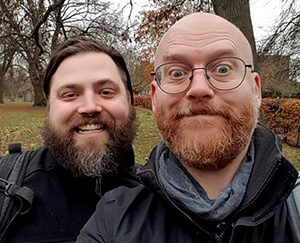
Hope you enjoy this episode - It's exciting and scary at the same time for me.
Check us out on Facebook, https://www.facebook.com/stuartandtodd/ or email us direct at stuartandtodd@gmail.com!
- Stuart & Todd
This podcast was a lot of fun to do.
I met up with the Mekashes (Eryn and Mike) at their hotel as they were over for The Prosthetics Event here in the UK.
I was lucky enough to squeeze in a face to face interview and had a frankly wonderful time chatting with a couple of lovely people who also are amazing artists and FX nerds. Listen here, or on Apple Podcasts/iTunes. Soundcloud or whatever podcatcher you like to use.
Her credits include TV shows Glee, Nip/Tuck & Movies such as Flags of our Fathers, Letters from Iwo Jima, My Sisters Keeper. As per her IMDb bio:
Eryn Krueger Mekash has 30 years of television and film industry experience as a makeup artist and is diversified in beauty, makeup effects and design. Her credits cover a wide range of productions. Eryn started her career in the special makeup effects field in Los Angeles.
Eryn has won 6 Emmys and 6 Artisan awards and well as 29 Emmy Nominations for outstanding makeup, prosthetic and non-prosthetic. She is the department head for FX's anthology, American Horror Story (2011), and can still make a nice mold in a pinch.
Listen here, or on Apple Podcasts/iTunes. Soundcloud or whatever podcatcher you like to use. It's a hefty one, almost 2 hours so get stuck in!
We are also now on Spotify, so check us out there too!
We talk about the great book Leading Ladies of Makeup Effects in which Eryn features, being a department head for FX heavy shows like American Horror Story, how much fun Halloween is at Rick Bakers place and recreating The Lost Boys thirty years on using pieces from the original moulds.
Todd was printing a head of himself to make 'Chocolate Todds' so that's the sound you can hear in the background. Todd discusses the finishing up of his third edition to the well-known FX bible Special Makeup Effects for Stage And Screen! Hear all about the goodies in store there in the podcast.
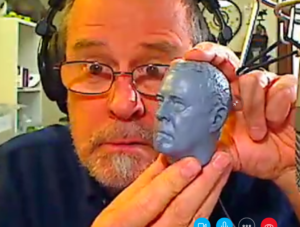
Incidentally, the antler in question which frankly I think looks like something which needs batteries is this: I think this looks suspect. Is it just me...?
WINNER!
The winner of the Steve Wang Sculpting Tool Set is Darren Pastor - well done fella. These will be on their way to you soon!
As ever, get in touch on our Facebook page, comment here or email us stuartandtodd@gmail.com.
My sincerest thanks for the Mekashes for giving up their time so generously and for all the beer and pudding!
Until next time!
---
Stuart & Todd
5 THINGS YOU'D LIKE TO KNOW (OR WOULD HAVE LIKED TO HAVE KNOWN) WHEN LEARNING PROSTHETIC MAKEUP
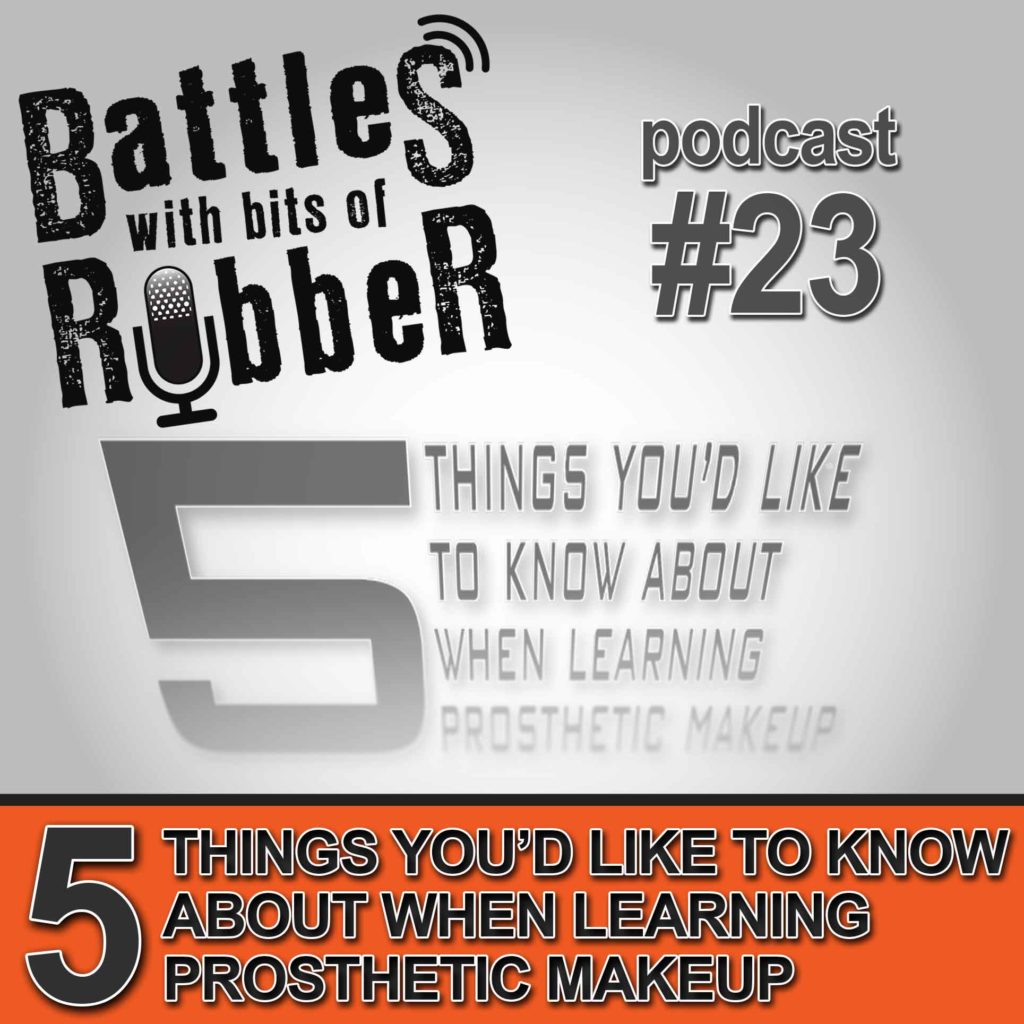
I'm still learning every day. I still make mistakes and I am still worried that every job I am about to start will go wrong. That feeling has never gone away and I suspect it never will. The trick is to get used to the sensation, understand that it isn't abnormal and to get on with the job anyway.
There are many things which often get taught again and again at makeup school, but along the way there are also things I noticed which are vital and yet which never seem to get the same level of spotlight.
In this podcast, Todd and I discuss 5 of the big ones which deserve looking at in some depth. We gave this subject as a talk at IMATS LA 2017, but this is a recording done recently (Nov 2017) so we're up to date and happy to hear your thoughts. Our email is stuartandtodd@gmail.com.
1. It's hard to be subtle.
2. There Are Other Important Qualities To Recreating Skin Other Than Shape and Colour.
3. Believe in primary colours
Check out our posts on use of colour Colour Theory In Practice and 7 Tips For Painting Skin Tones.
4. 90% of what you do won't get noticed (Hopefully)
5. Failure: when things don't go to plan, it's easy to beat yourself up thinking you're no good.
Feel free to get in touch on our facebook page or email us at stuartandtodd@gmail.com --- Til next time
Stuart & Todd
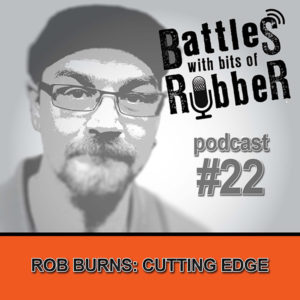 Rob Burns makes great sculpting tools because he sculpts and knows what works.
Rob Burns makes great sculpting tools because he sculpts and knows what works.
Blog post for this episode with video:
http://www.learnmakeupeffects.com/rob-burns/
--------------------------------
It helps to know your tools, and in the podcast, he chats about how he started the company and how he paid his dues. We also chat with Mitch of Brick In The Yard again, and we talk about the proliferation of information in the hi-tech age and how having so much information on hand doesn't necessarily mean that it makes it into the brain.
Incidentally, this is what the tribble-like recorder looked like which we mention in the podcast:
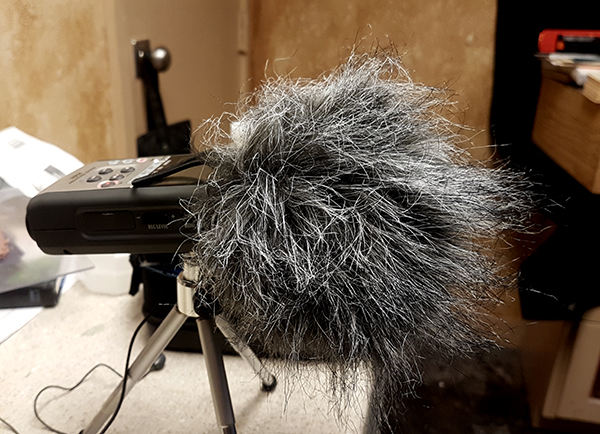
Sculpting Tools Tools are something I have an unreasonable desire for, and I have far too many already but I'll be damned if that will stop me buying more. I have done a few posts on tools, manufacture tutorials and loop tool repair. This doesn't mean I don't buy tools as well - just because I know how to make a sandwich doesn't mean I don't go to Subway on occasion!
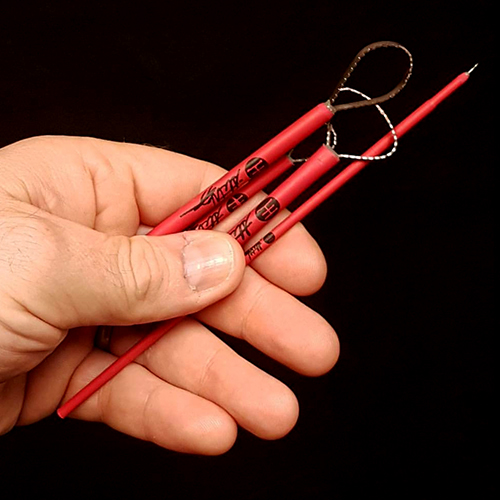
When I met with Rob at BITY, I had a play with the Steve Wang set, a signature set of tools designed in association with the master creature designer himself! I liked them so much I bought a set there and then for myself, and also got another set for a giveaway on the podcast. See the competition details below to enter!
Our email is stuartandtodd@gmail.com
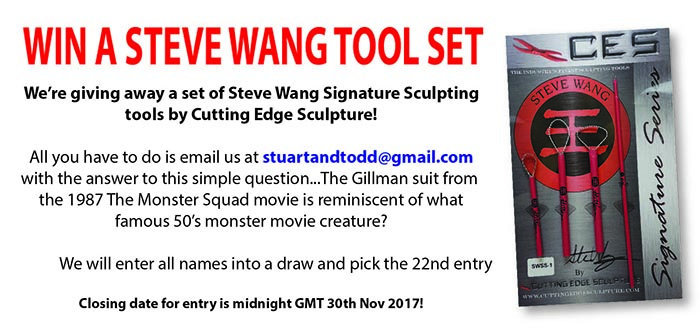
Makeup Education Todd is busy with the newest edition of his book, and I have had a few cool jobs and loads of teaching spots which led me to reflect on the differences between the job and the education side of things.
There are a few recurring issues I see partly because I think people think 'makeup' sounds like an easy option and partly because academic frameworks don't necessarily make for a good approach to what is a vocational skill.
This being the case, we want to hear from anyone who is/was either a student or tutor in a makeup college/school/course and has a strong feeling either good or bad. What was your experience? What went well and what was pitiful? Did you find yourself surrounded with like-minded artistic souls or was it a difficult mixed group?
I've seen a lot of good thing and great tutors working hard to do right by their students, but sometimes any good they do is despite the system they find themselves in rather than because of it. Am I way off?
Let me know by emailing stuartandtodd@gmail.com It'll all be handled in confidence - I'm not interested in naming individual schools or people but I am interested in discussing the problem areas and what we can do to address them.
Check out Rob Burns and Cutting Edge Sculpture on Facebook, Instagram and the website.
Check out Prosthetics Magazine too, available as print or online subscription. This edition features a ton of amazing stuff, and we have part 2 of our latex tutorial - applying latex appliances.
Until next time!
Stuart & Todd
Allen Hopps is the director of Dark Hour, a huge haunt attraction in Plano, Texas.
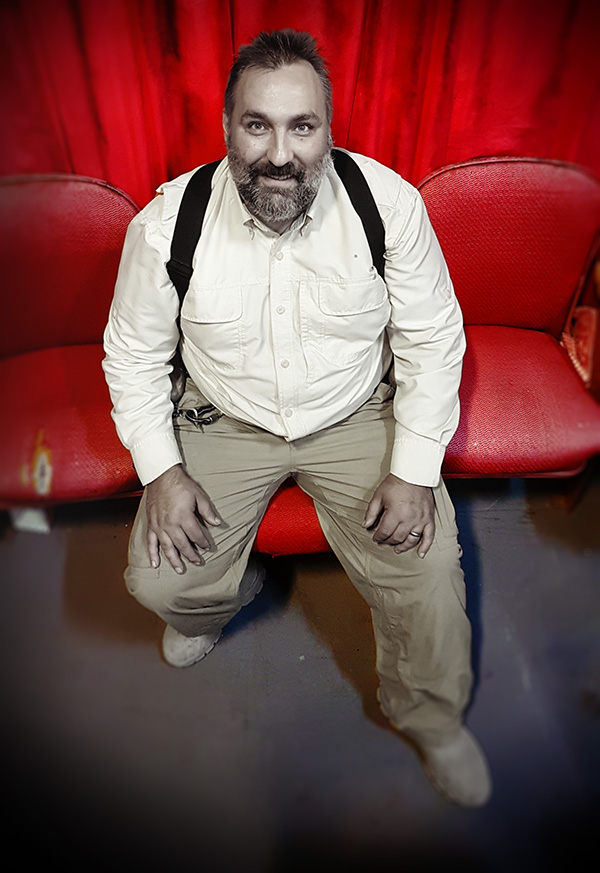
I wanted to take a tour and chat with Allen about what it takes to keep people scared and the business of running a haunt all year round.
When people think about creating makeup effects, masks and prosthetics, its usually associated with film and TV shows. In the US, Halloween is pretty big and getting bigger every year.
I went for a tour of the huge show floor, and got to see behind the scenes where all the in-house stuff gets made - from sets, costumes, masks, prosthetics and props. The level of the thought and detail that goes into setting up a new show (there are several original new shows a year) is incredible. The team work year round updating and thinking up new ways to keep the screams coming.
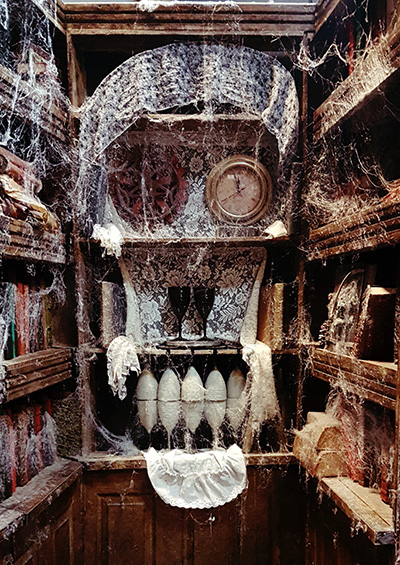
There are a few absolute wisdom bombs in this podcast episode which many makers would do well to listen to.
- If you've ever been guilty of having great ideas which seem to expand ever bigger, only to burst and fade away then this episode of the podcast is for you!
- If you've been trapped in a cycle of indecision, dithering and not wanting to grasp the nettle of your creative masterpieces then this episode is for you.
- If you think that movies are the ultimate end-game for creating creatures and masks and that if you can't make that coveted position then what's the point...? Then this episode is for you!
===================================
- Check out http://darkhourhauntedhouse.com/ to see what's on offer and I highly recommend Allen's YouTube channel, StiltbeastStudios.
- On Insta, check him on @allen_hopps.
- Dark Hour are on YouTube too: https://www.youtube.com/user/DarkHourPlano
Cap plastic is big....and it's not just for bald caps.
Cap plastic is so called as it was originally pretty much used only for making bald caps, so those with hair could temporarily be without it.
Over the last ten years or so, it's used much more widely as an encapsulant or barrier in a mould so that when silicone gel appliances are cast into it, they come out of the mould with that cap plastic as a surface. This allows glue and makeup to remain attached to it - after all, silicone is at its best a mould material because almost nothing sticks to it!
Chek out the blog post that supports this episode of the podcast.
OOOh, and if you enjoyed this then tell a friend, give us a shout out on social media or just say hi on our Facebook page! We love talking to you!
-Stuart & Todd.
This podcast episode is the belated accompaniment to the blog post.
We had a blast, learned some stuff and made some new friends. It was amazing, and I can't wait until IMATS London when I'll be back! Until then, please enjoy and get in touch with us at stuartandtodd@gmail.com and our facebook page.
Please also check out the breakdowns of the makeup demos, there is extensive behind the scenes info on the build of both makeup demos:
Thanks for listening!
---
Stuart & Todd

